fall inside a hole
Plarail D-51 Locomotive with Light
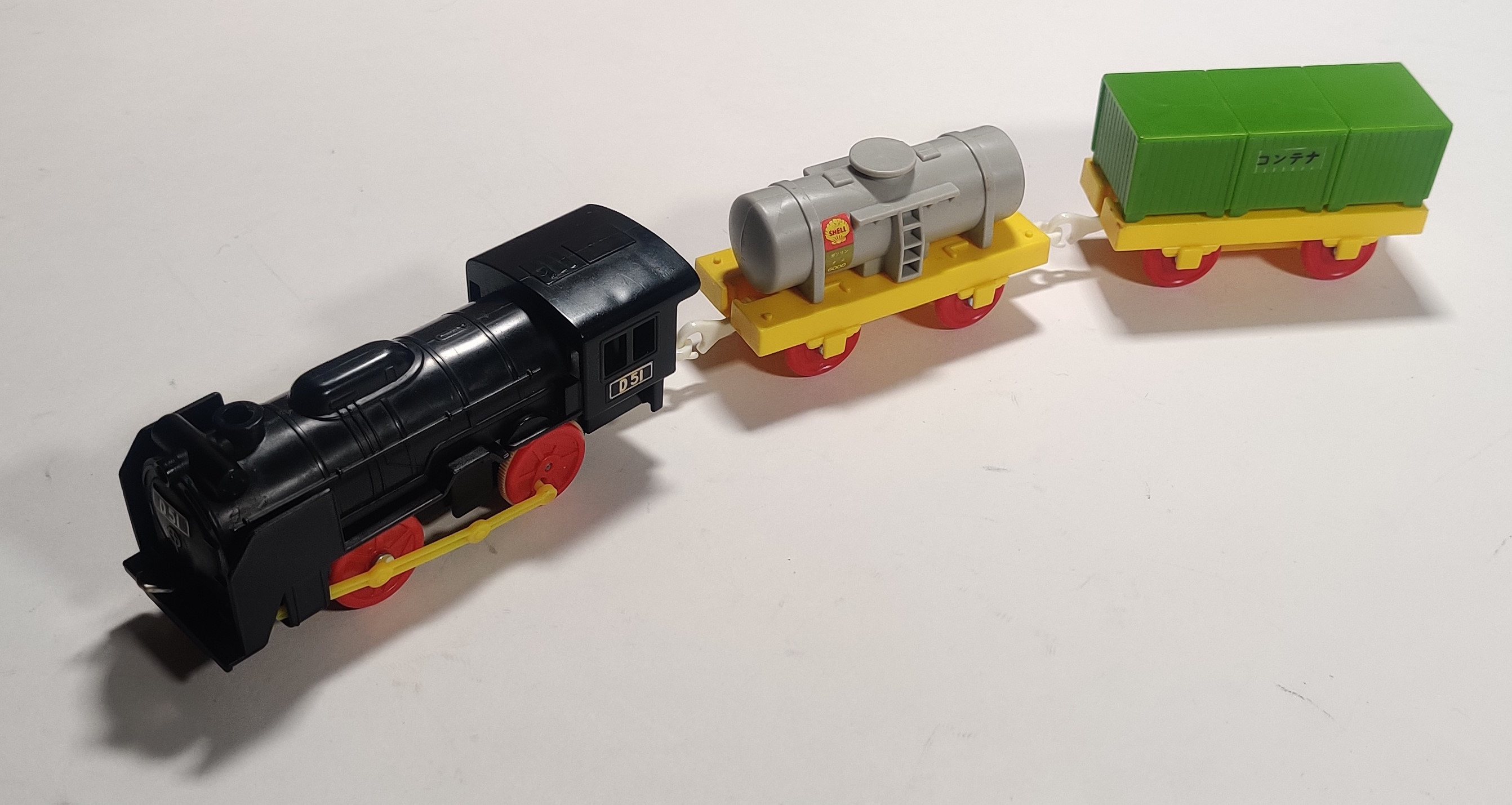
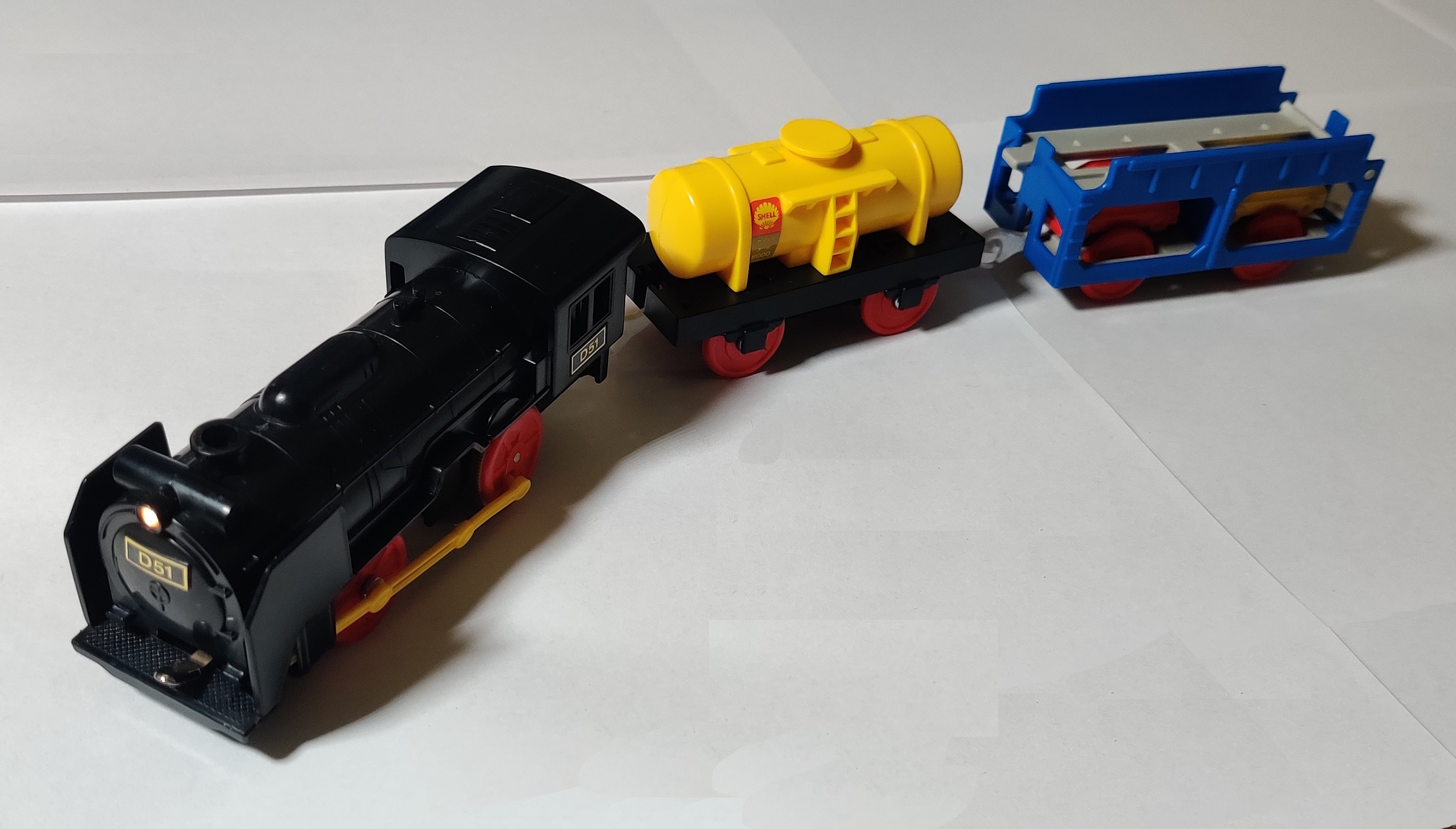
The D51 is both a classic Japanese steam engine and a classic Plarail locomotive. Over 1000 D51 were built between their development in 1935 to the end of their production in the mid 1940s and is still an iconic Japanese steam locomotive. The D-51 Locomotive with Light (ライト付D-51機関車) is a standard three-car Plarail release that includes a D-51 steam locomotive and two freight cars, originally a grey tanker and green container car and later a yellow Shell tanker and a blue auto carrier with two small cars. The original D51 appeared in the second generation of Plarail boxes in 1970 and in 1980 the D51 chassis was adapted to power a light in the upper body shell and first appeared in the fifth generation of boxes as SL04 D-51 Locomotive with Light.
SL-04 D-51 Locomotive with Light (1980)

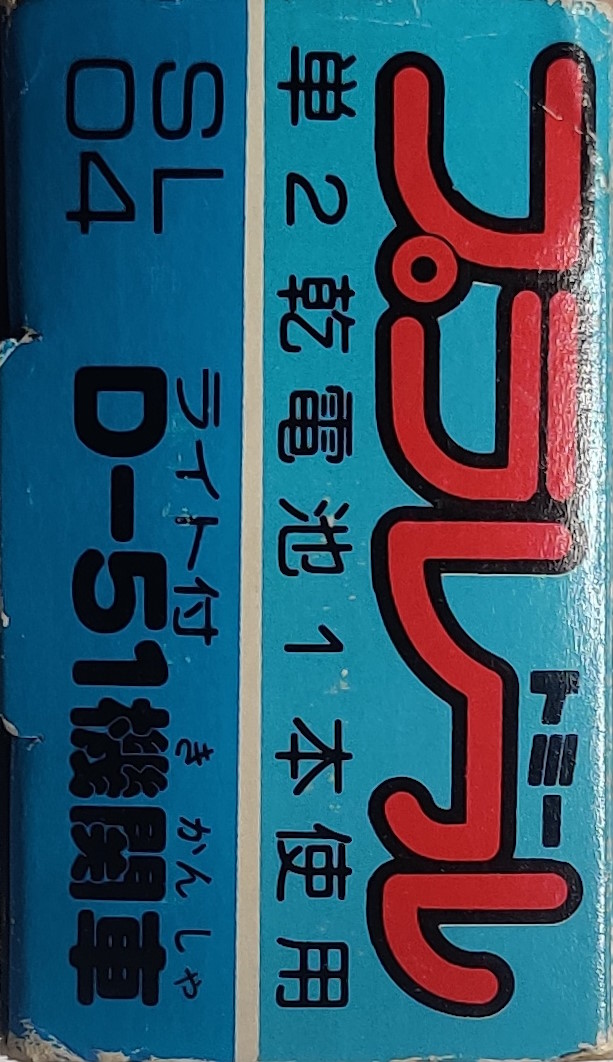

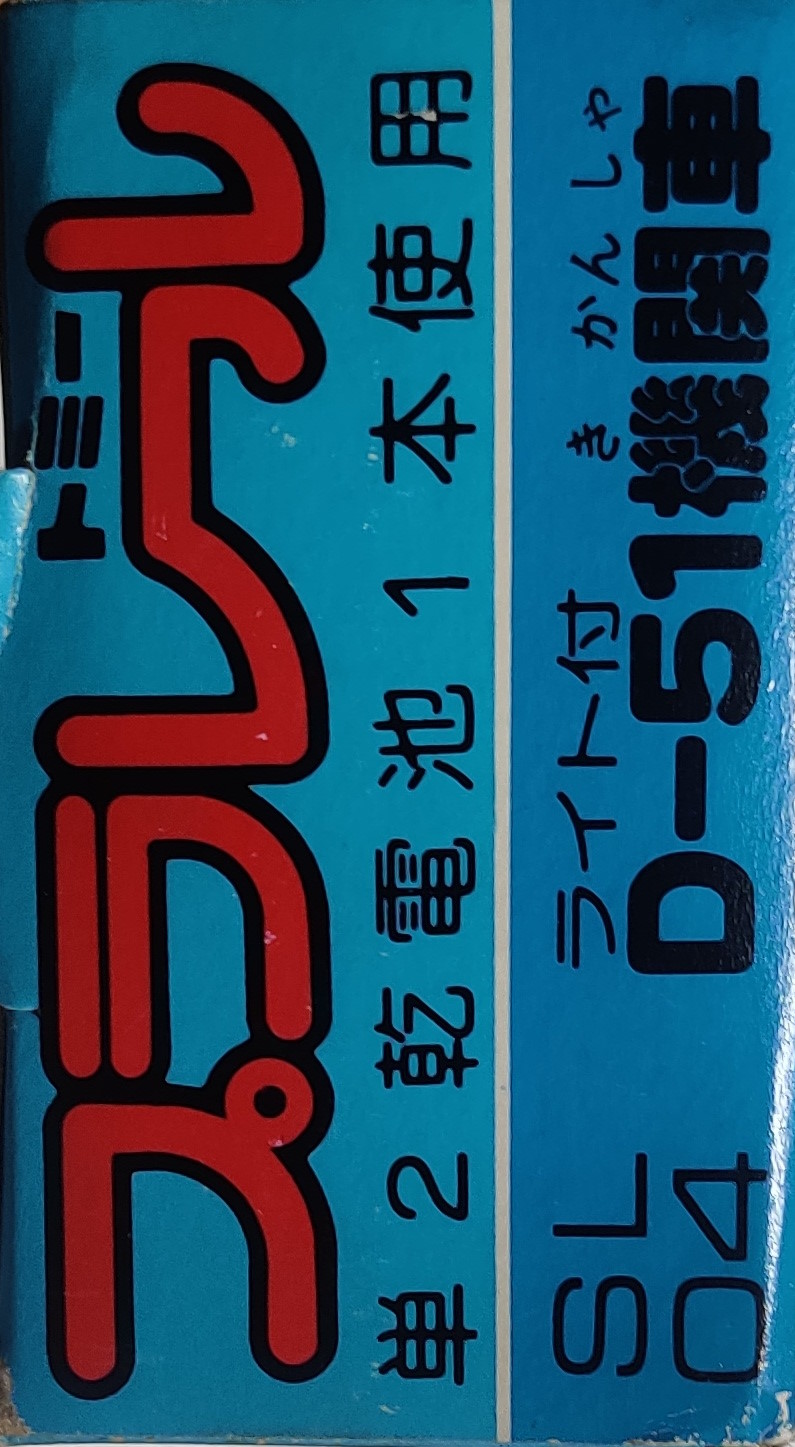


The original 1980 D51 with Light was given the designation SL04 and included an old power D51 with a grey tanker and a green container car. It was released in a fifth generation "EC" (or SL for Steam Locomotive in this case) box. The rear of the box is marked MS-30 meaning it was likely printed in 1981. After the curvy Tomy logo replaced the "boy and girl" logo around 1982 subsequent 5th generation print runs used the updated 5th generation box design with the curvy logo.
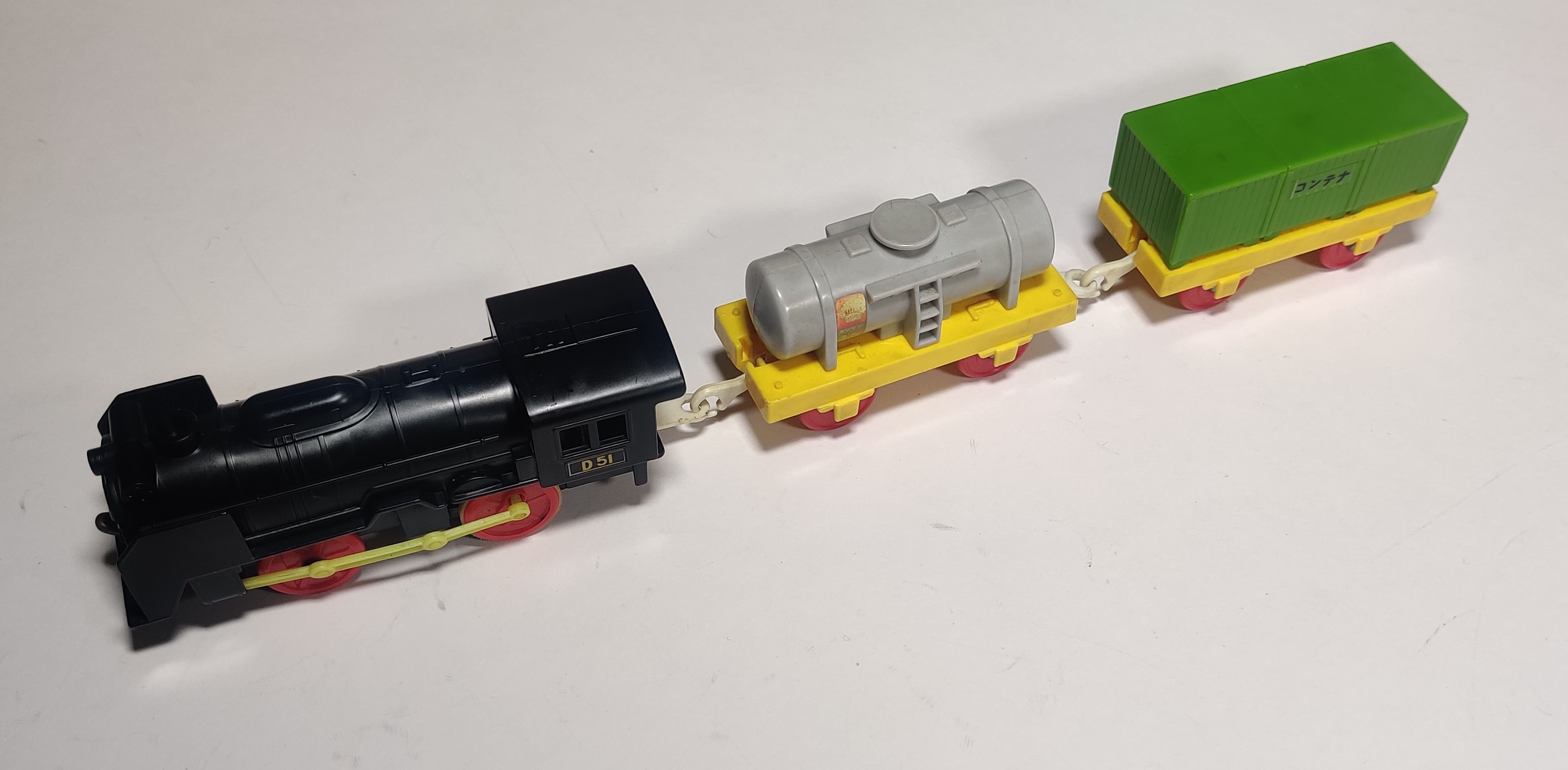
An additional contact strip in the chassis brings power from the positive battery terminal to the front of the locomotive to one of two metal contacts, the other of which is connected to the negative battery terminal through the power switch already at the front of the chassis. Two contacts in the upper shell press against the chassis contacts when the top shell is in position and power a small incandescent bulb in the front of the smokebox.
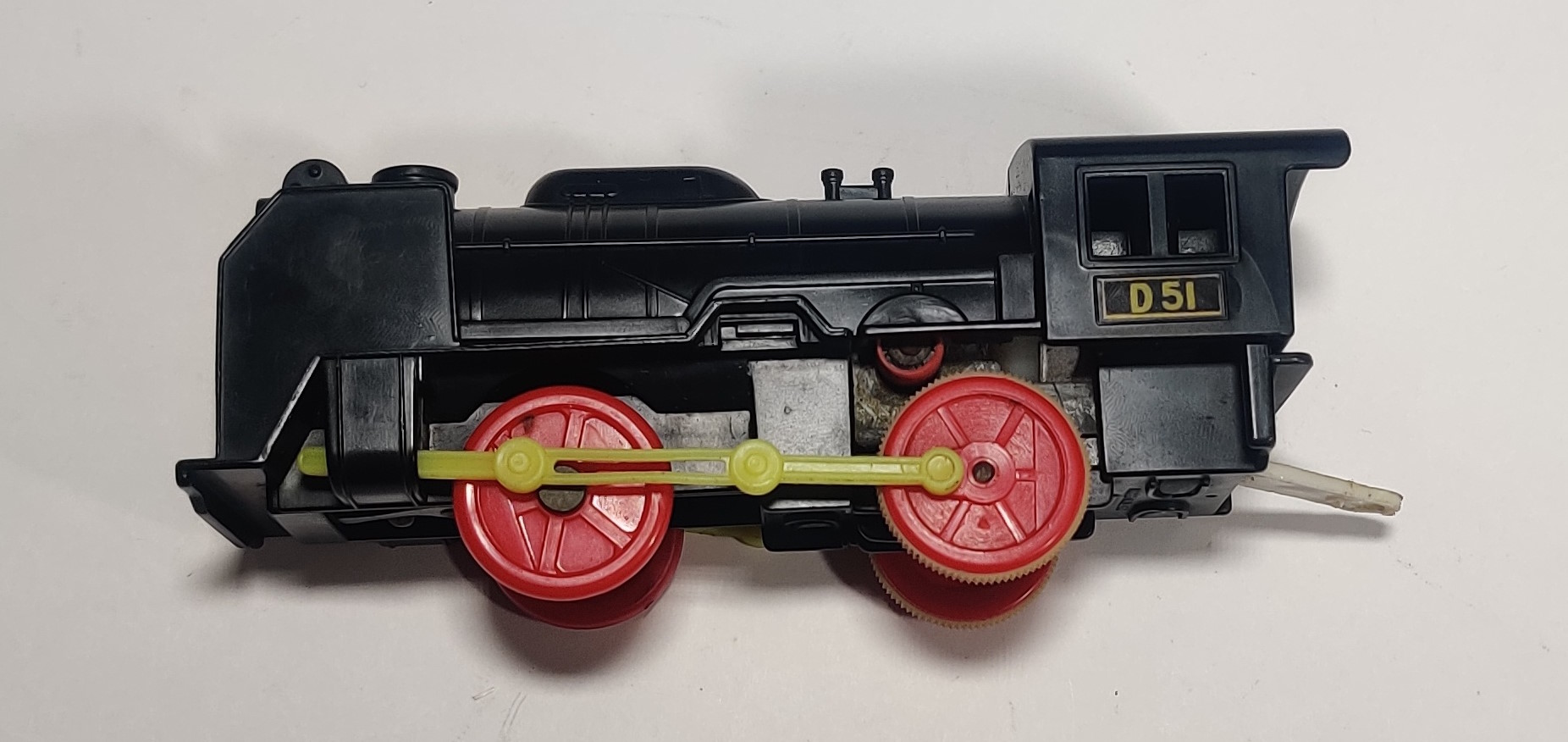
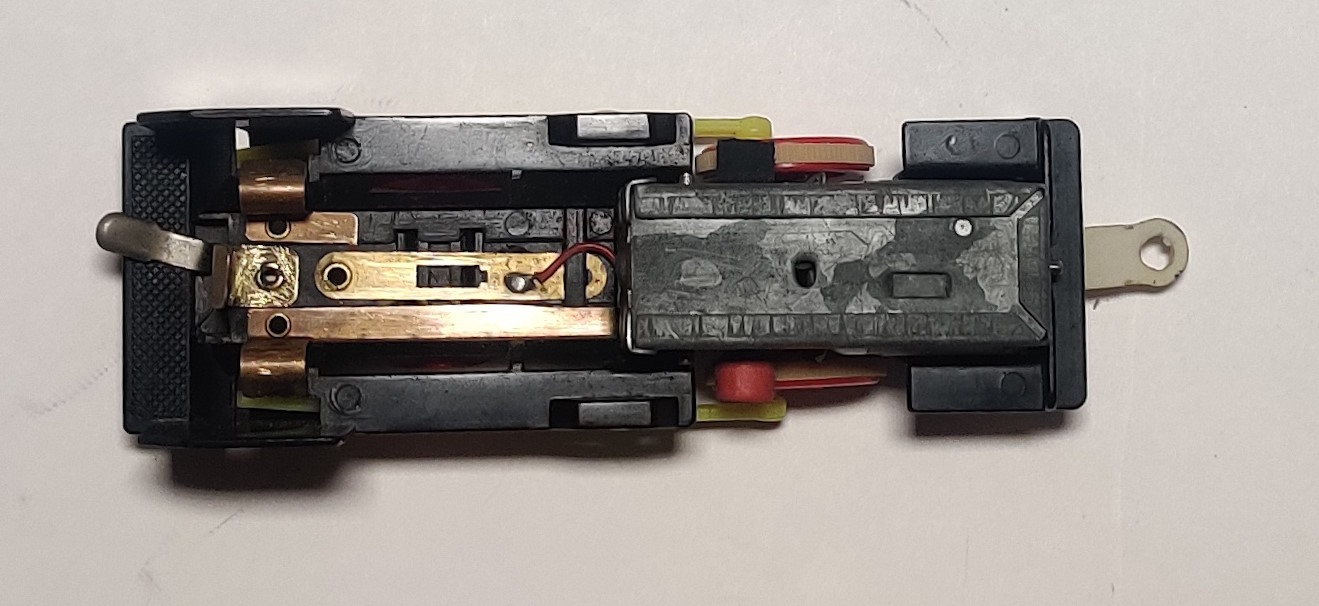
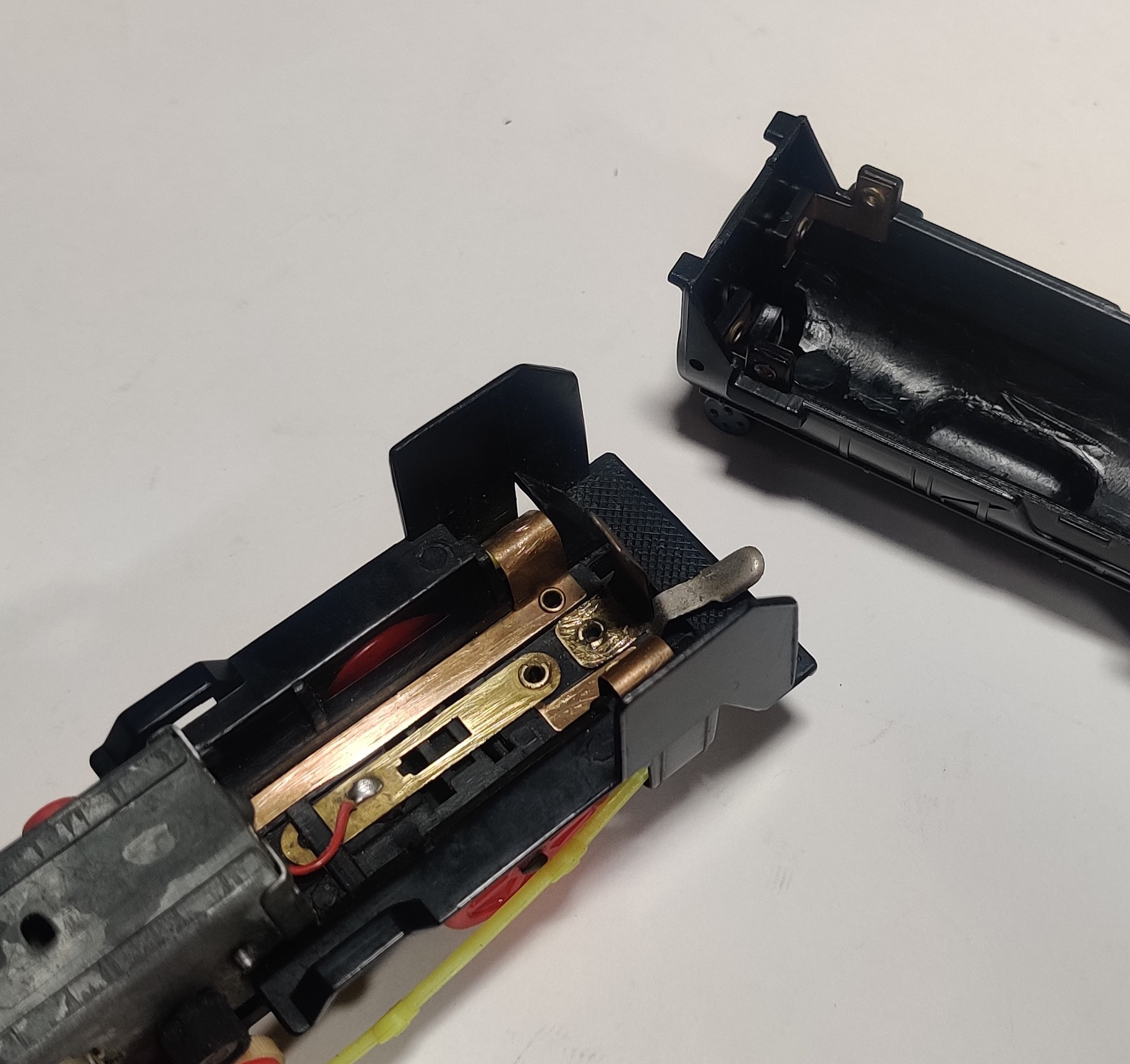
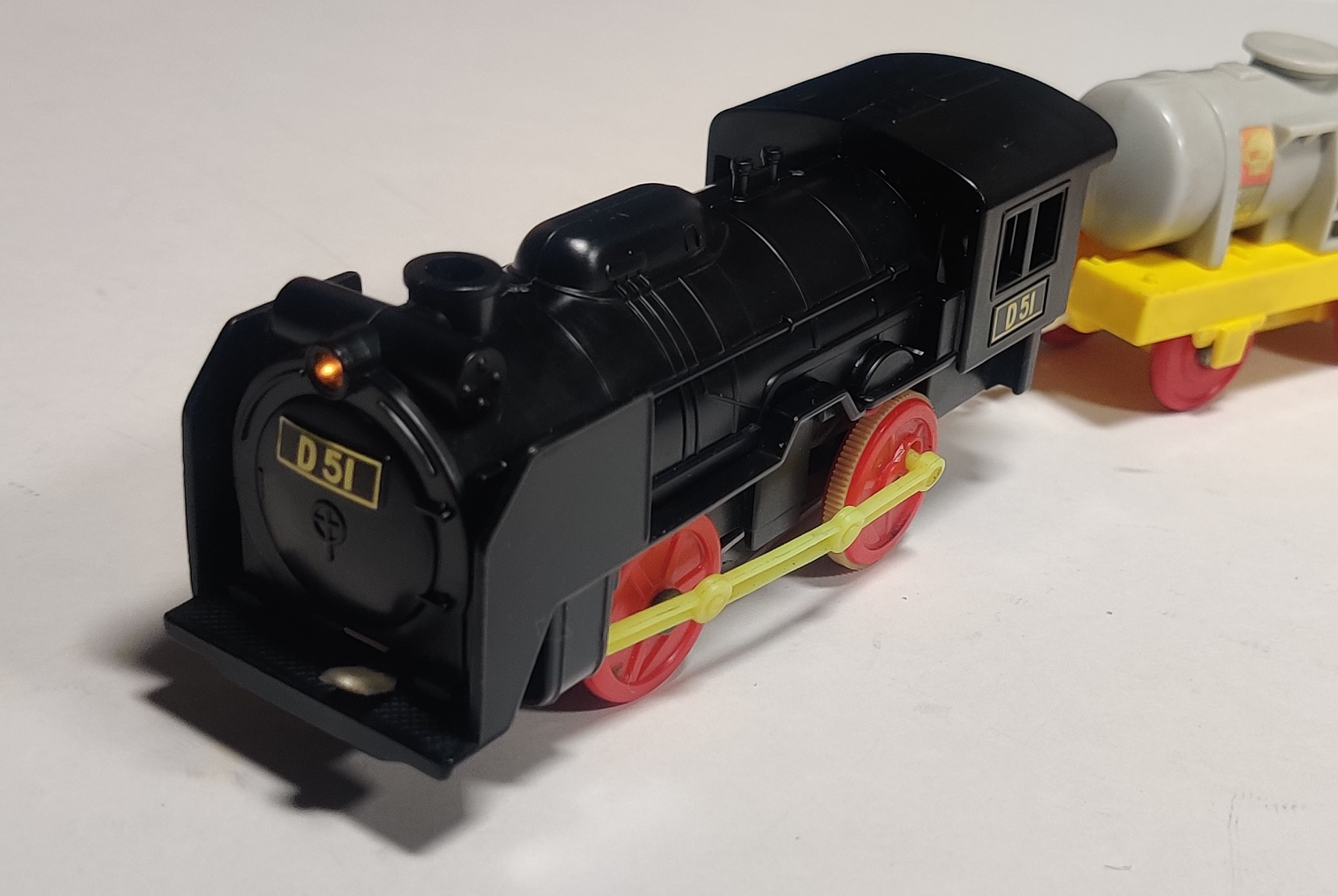
As with other old power gearbox trains, all the rubber components of the friction drive needed to be replaced on both my 1980s D51 with Lights. These earlier Japan made D-51 with Lights include the clicking gearbox noisemaker to imitate chuffing.


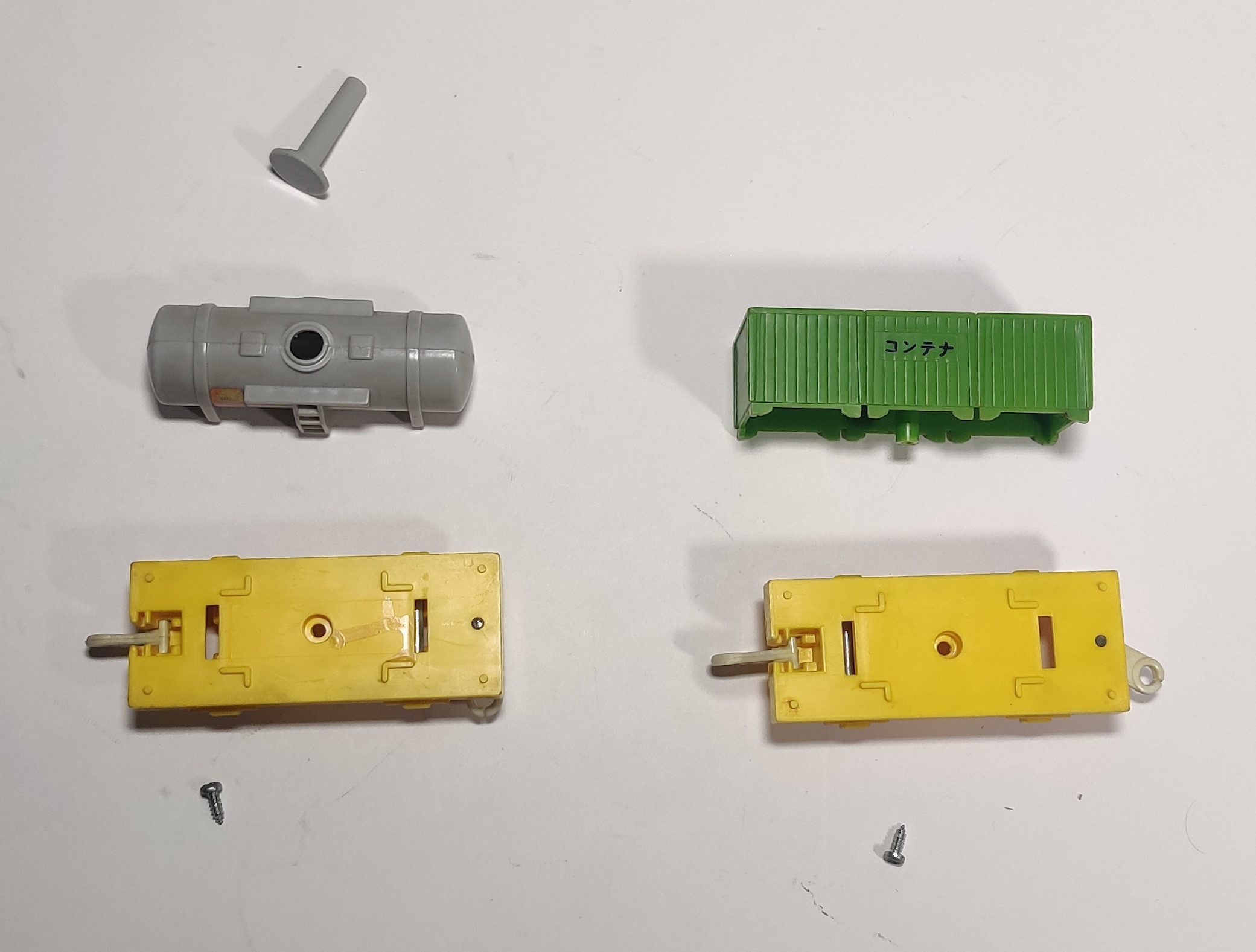
The container car and tanker car share a common chassis and were first introduced in 1970 alongside the original Plarail D51 so they fit the design style perfectly. The chassis have been updating to have stronger wheel supports since the 1970s.
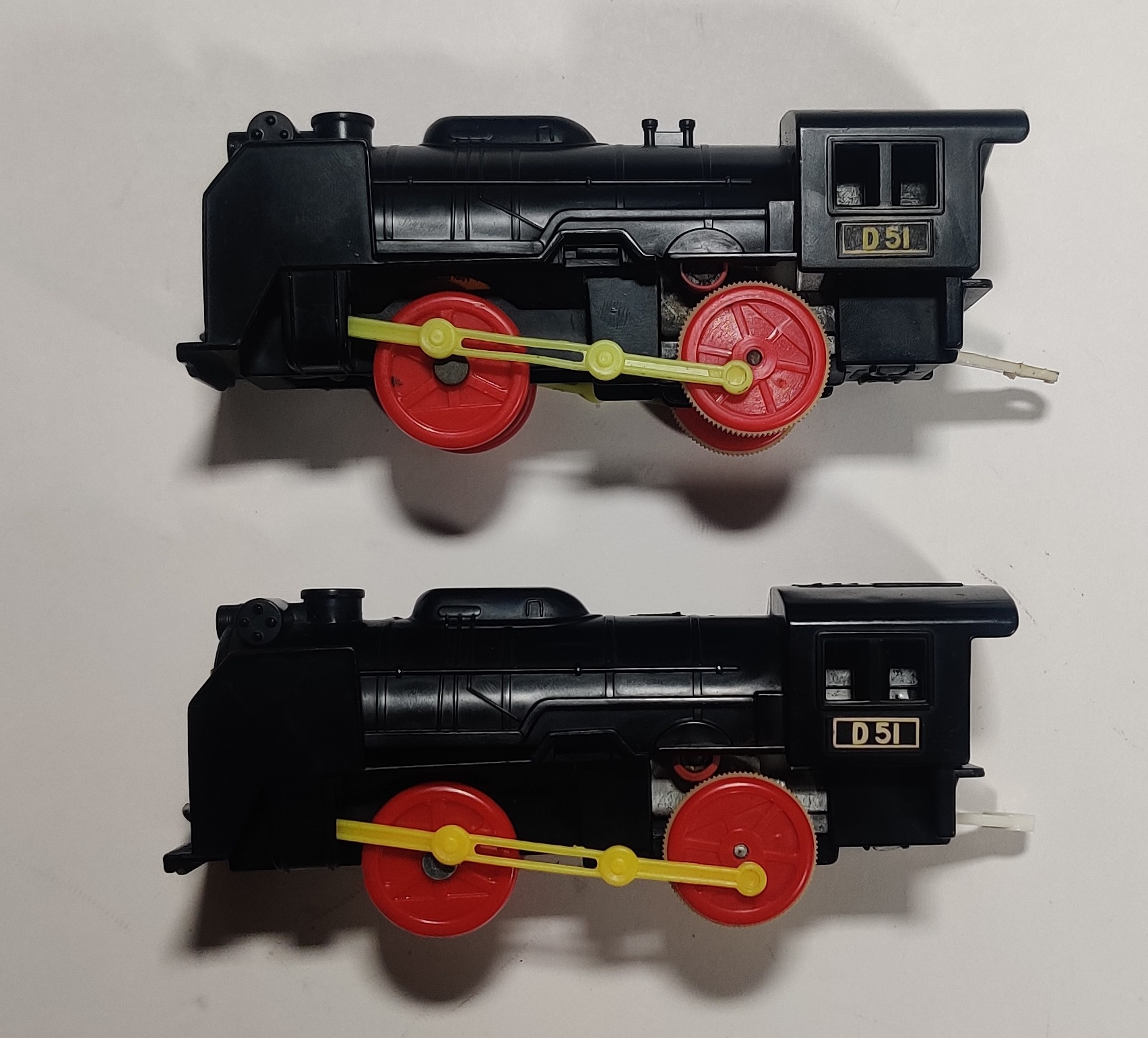
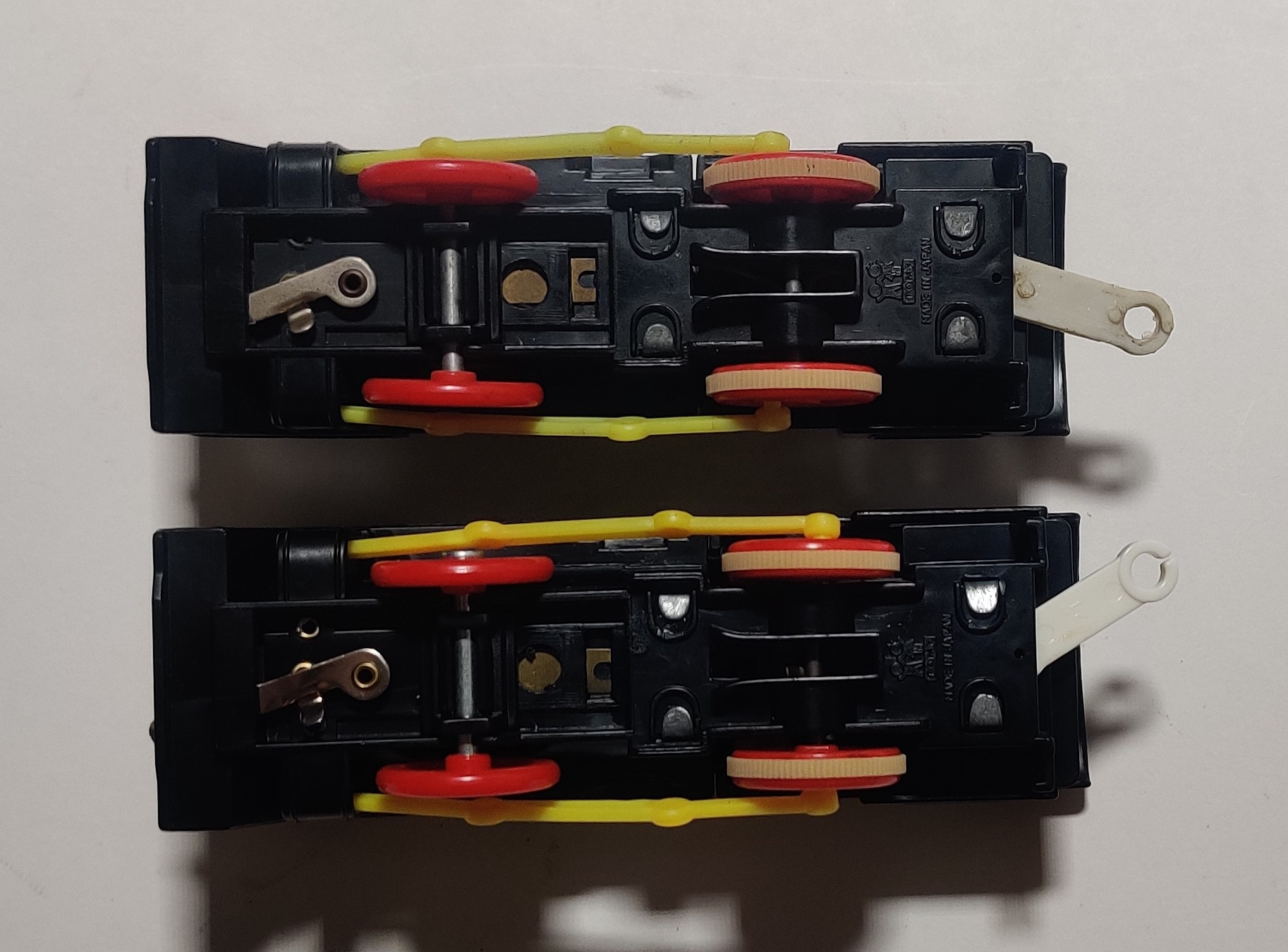
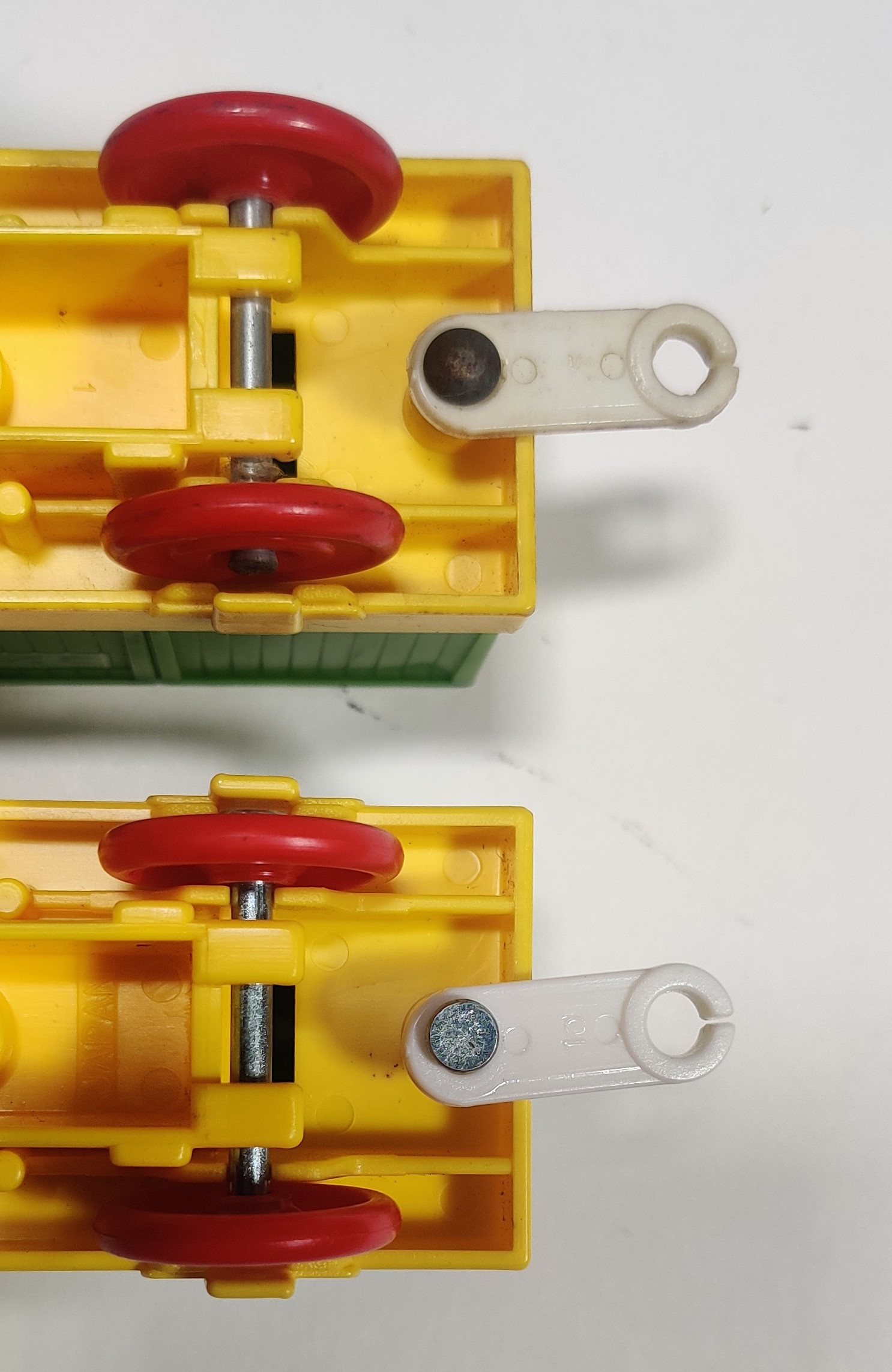
I have two early 1980s D51 with Lights. The earlier of the two is loose but complete and has older milky yellow "new" design side rods (as opposed to the metal crankpin design seen on older D51s like the D51 Express Train) and uses an older style of rear coupling. It probably dates to 1980 or 1981. The slightly later (and nicer condition) example was purchased with the original circa 1981-1982 box shown above. The two cars also have slightly different couplings between the two releases, with the older pair using a rounded pin to secure the loop couplers that was changed to flat on the later pair.
D-51 Locomotive with Light (1987)

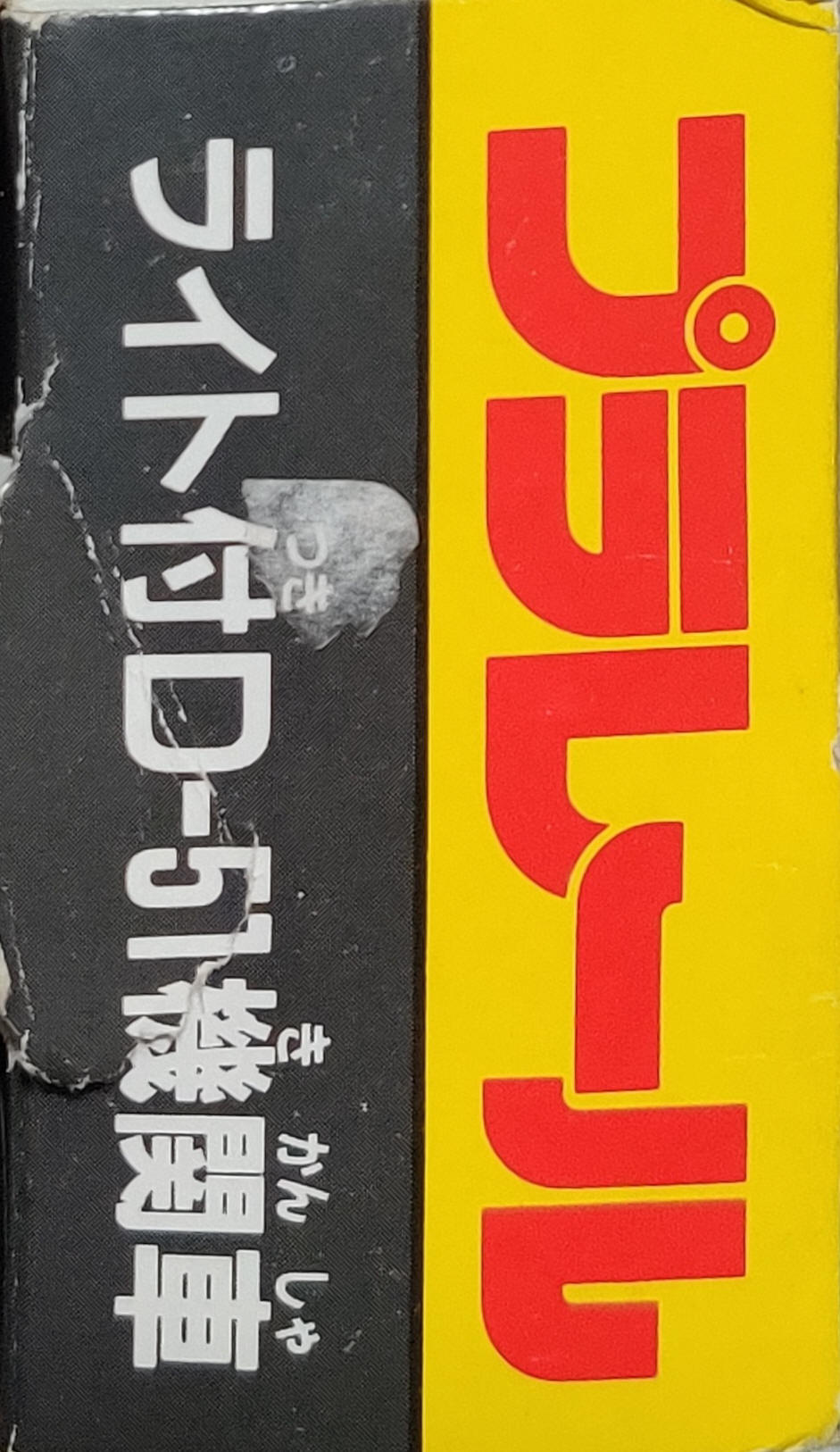

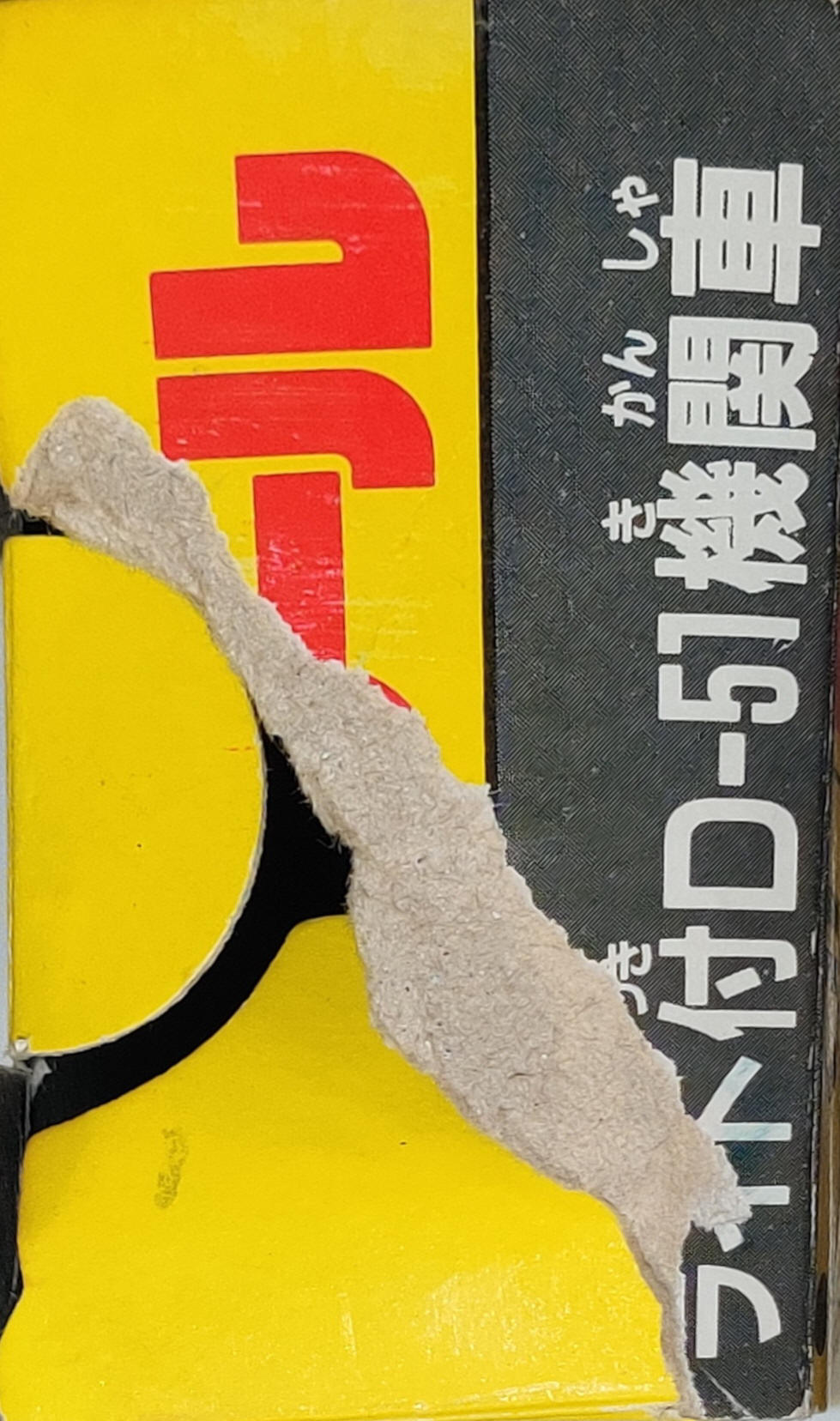


My second oldest boxed D-51 with Light is this 1990 Thailand printing of the 6th generation box. This style of box was introduced in 1987 with the move to new power and would have been produced in Japan until this reissue after Tomy began moving some production to Thailand in 1989. In 1990 the D-51 with Light retailed for 1600 yen. The D-51 in this box was produced in Thailand in December 1991 and was probably not sold until 1992. The rubber rim drive tires and wheel traction tires are all original and are some of the nicer condition older rubber components in my collection, although the rim drive wheels are certainly harder than they were when new.

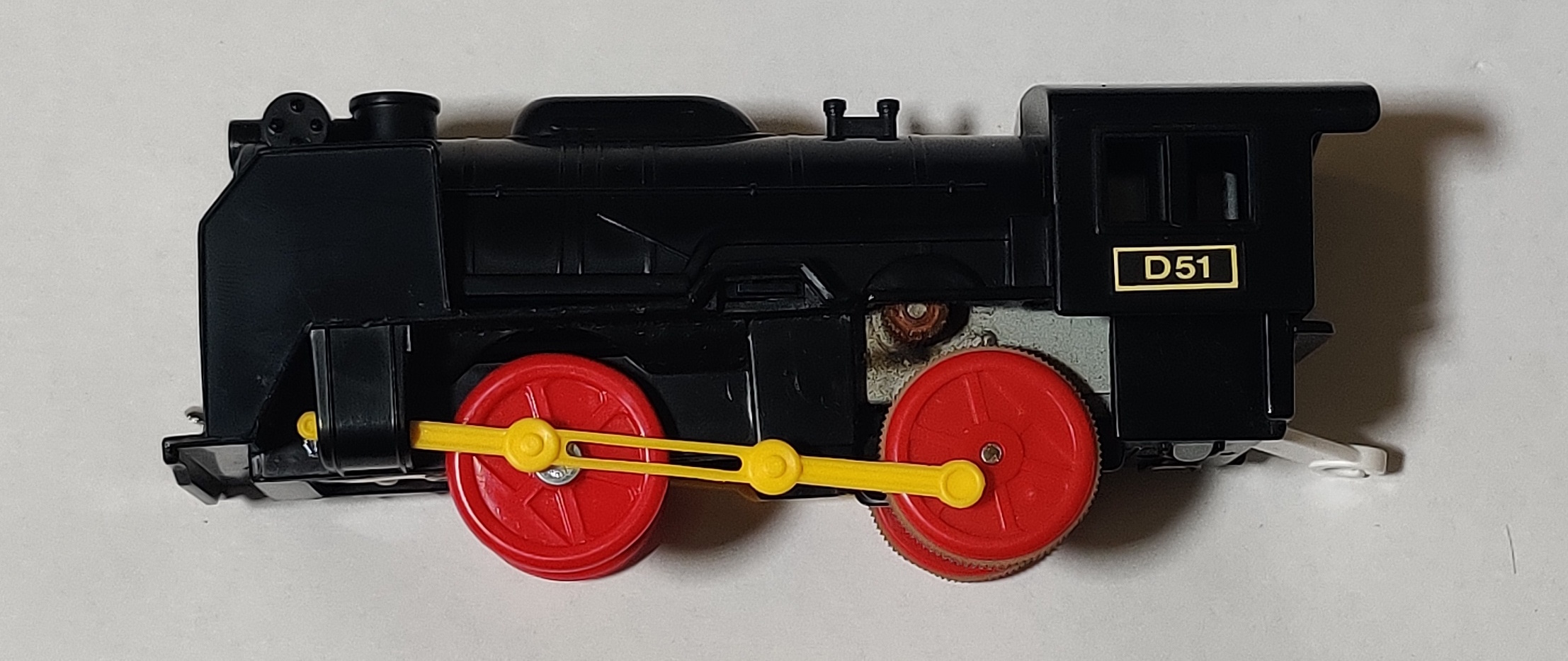
Unlike most of the rest of the range which was converted to use the new power gearbox for 1987, the D-51, C-12, and some other smaller locomotives continued to use the old power friction-drive gearboxes. Most old-power trains like the DD-51 and EF-66 continued to be produced in Japan until they were finally adapted for new power but the D-51, C-12, and Mickey Poppo were all produced in Thailand with friction-drive gearboxes.
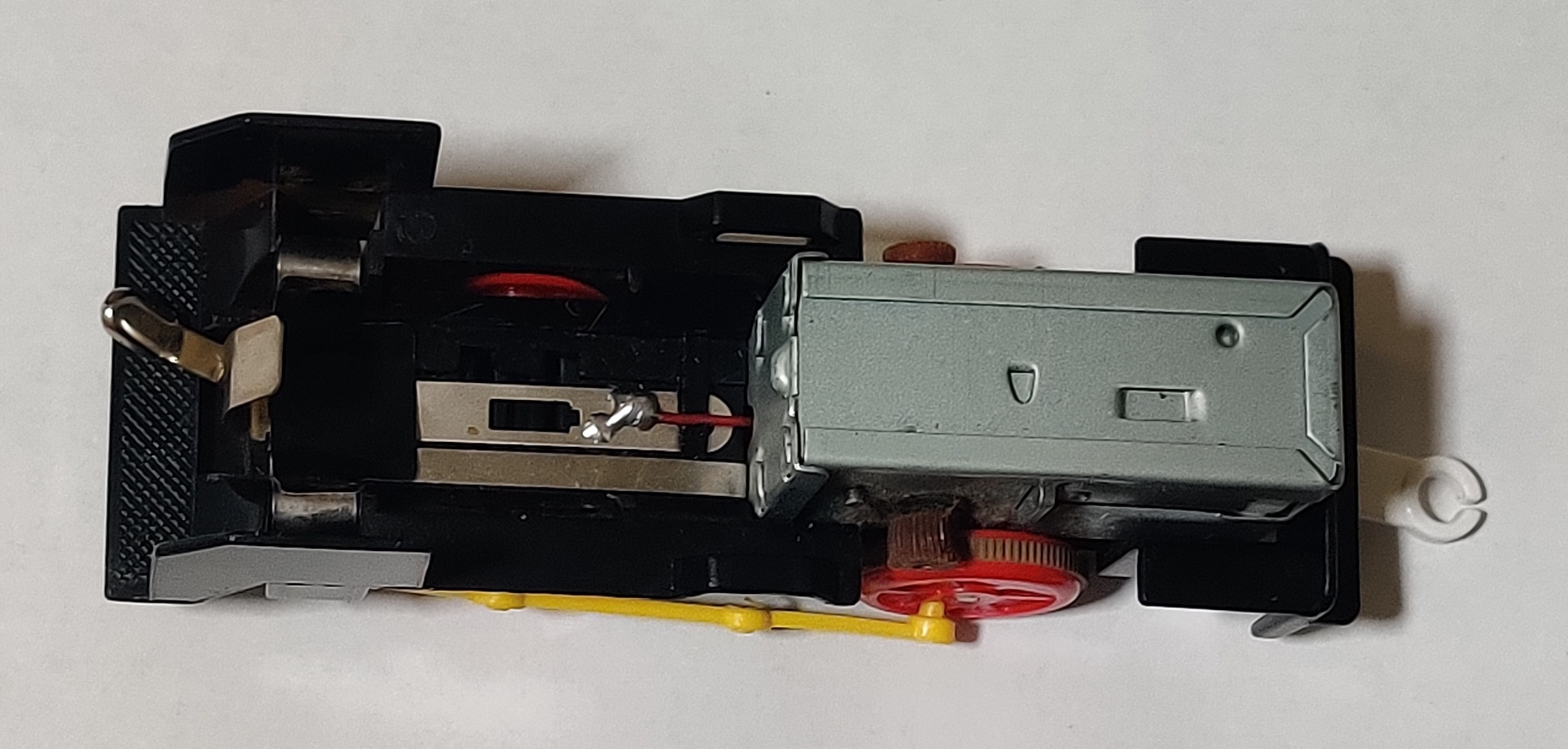
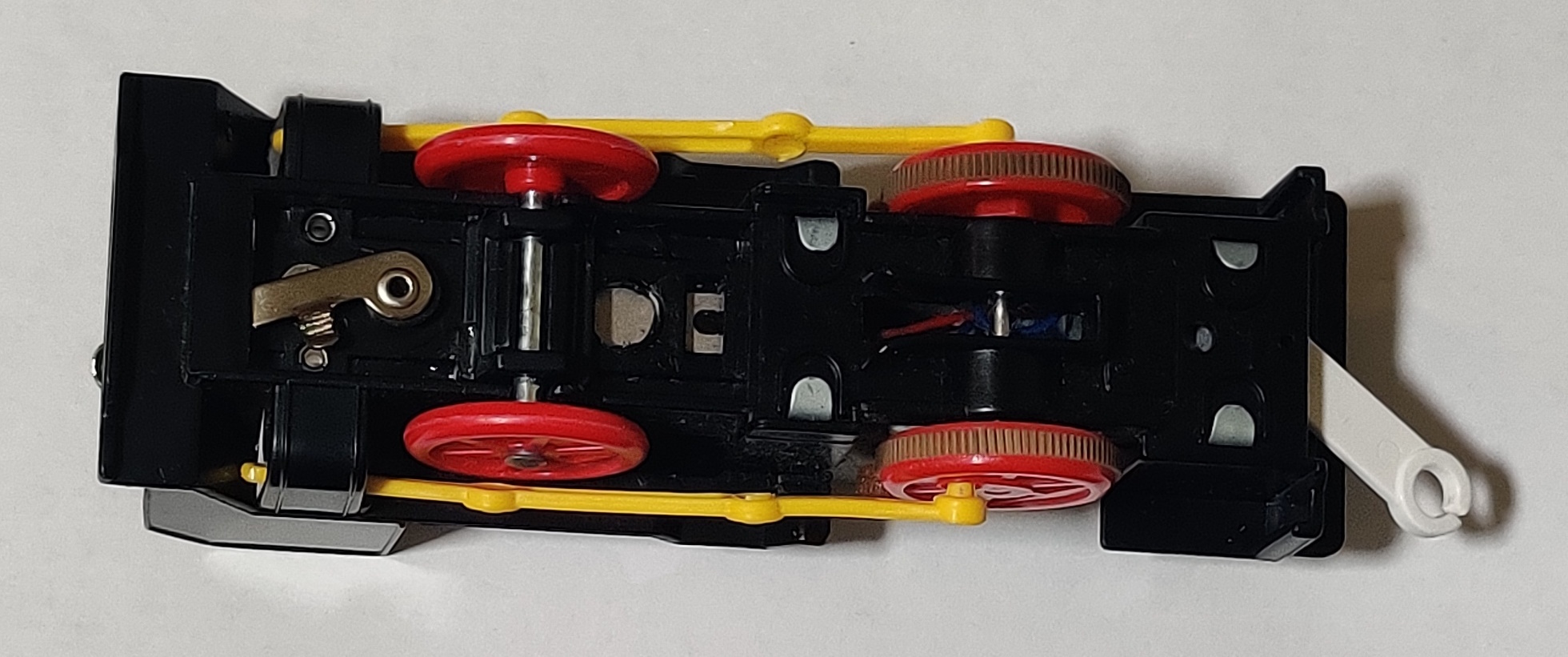
The layout of the contact strips is the same as the 80s D51 but out of a silver metal instead of brass. The gearbox in these Thailand made D-51 with Light do not have the chuffing noisemaker present in earlier Japan-made ones. I do not have one to confirm, but I suspect the earlier Japan-made 6th generation D51 with Lights from 1987 to 1990 or so would have still included the clicking noisemaker.
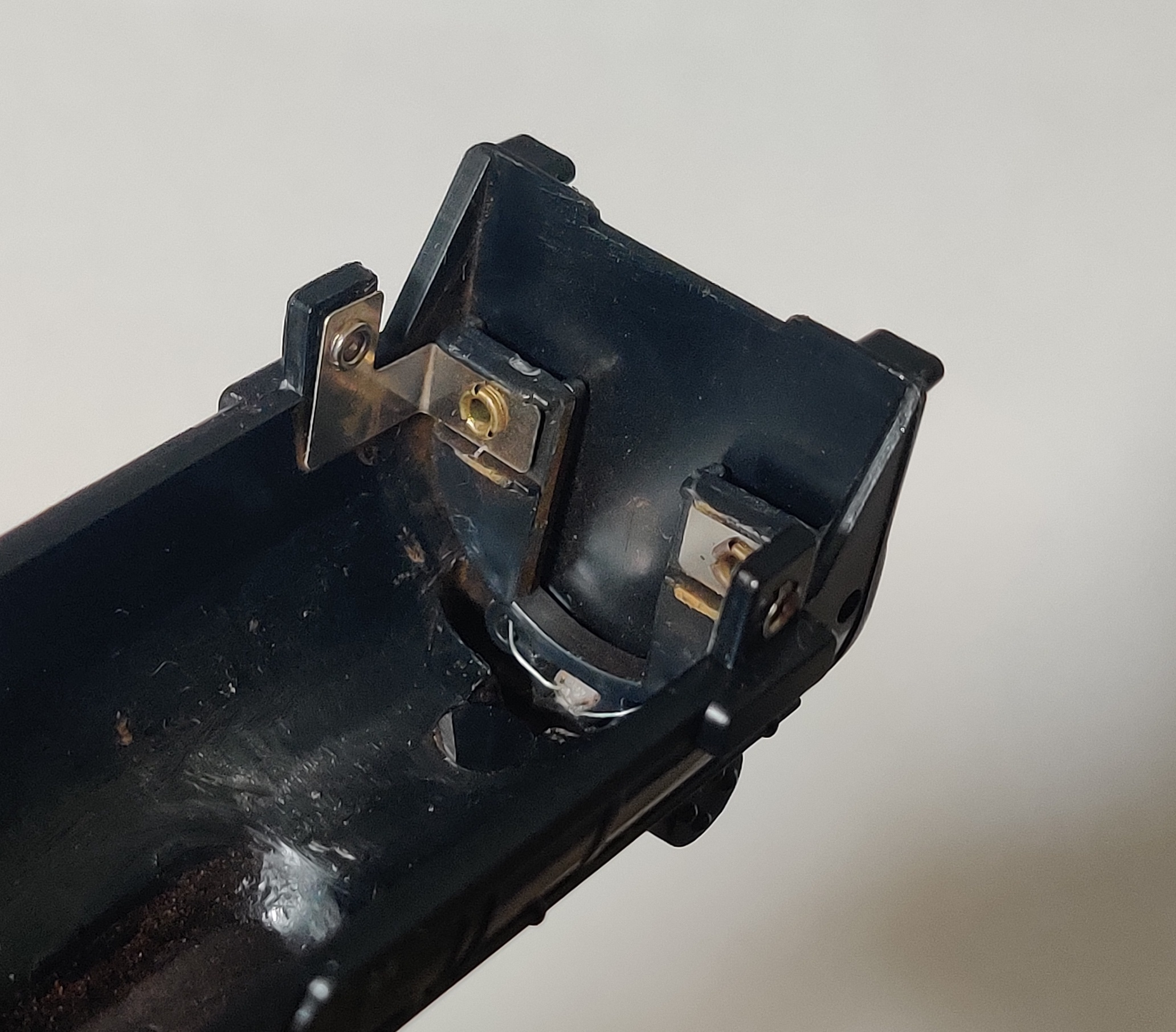
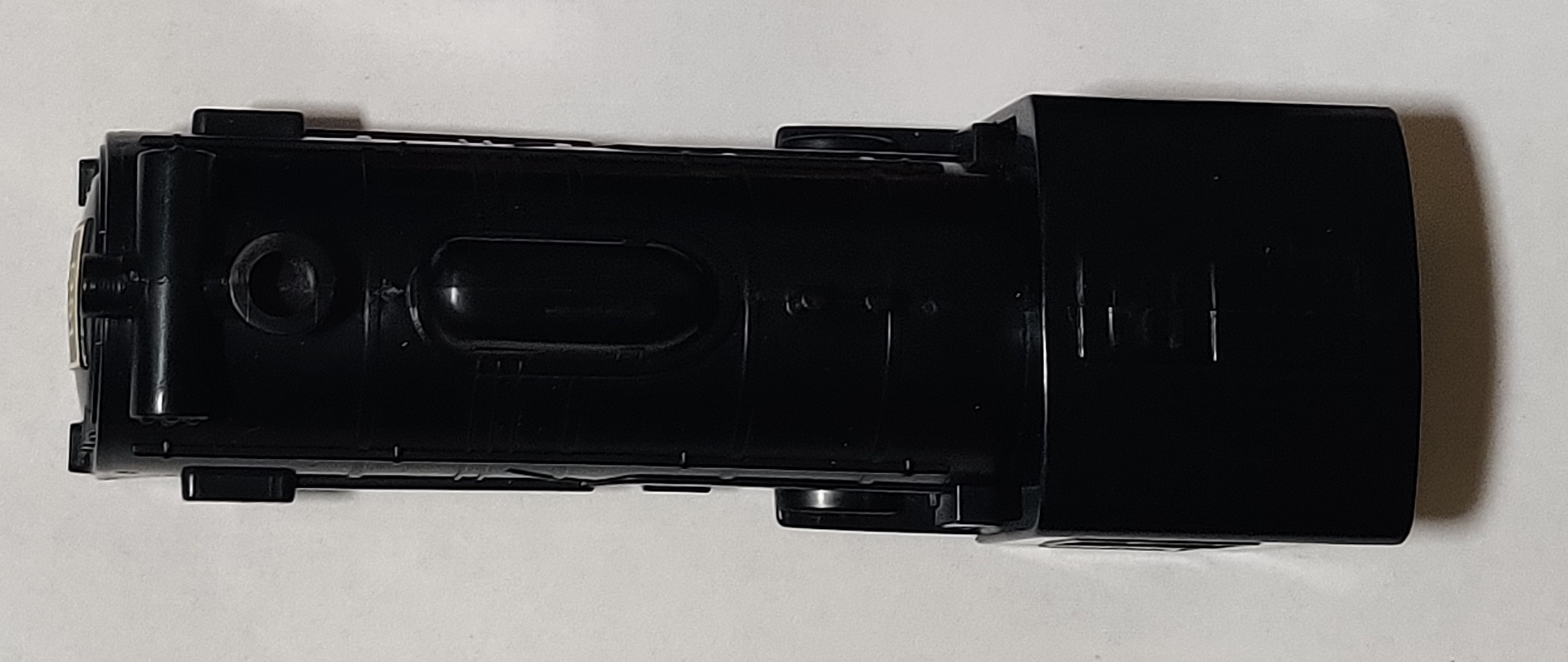
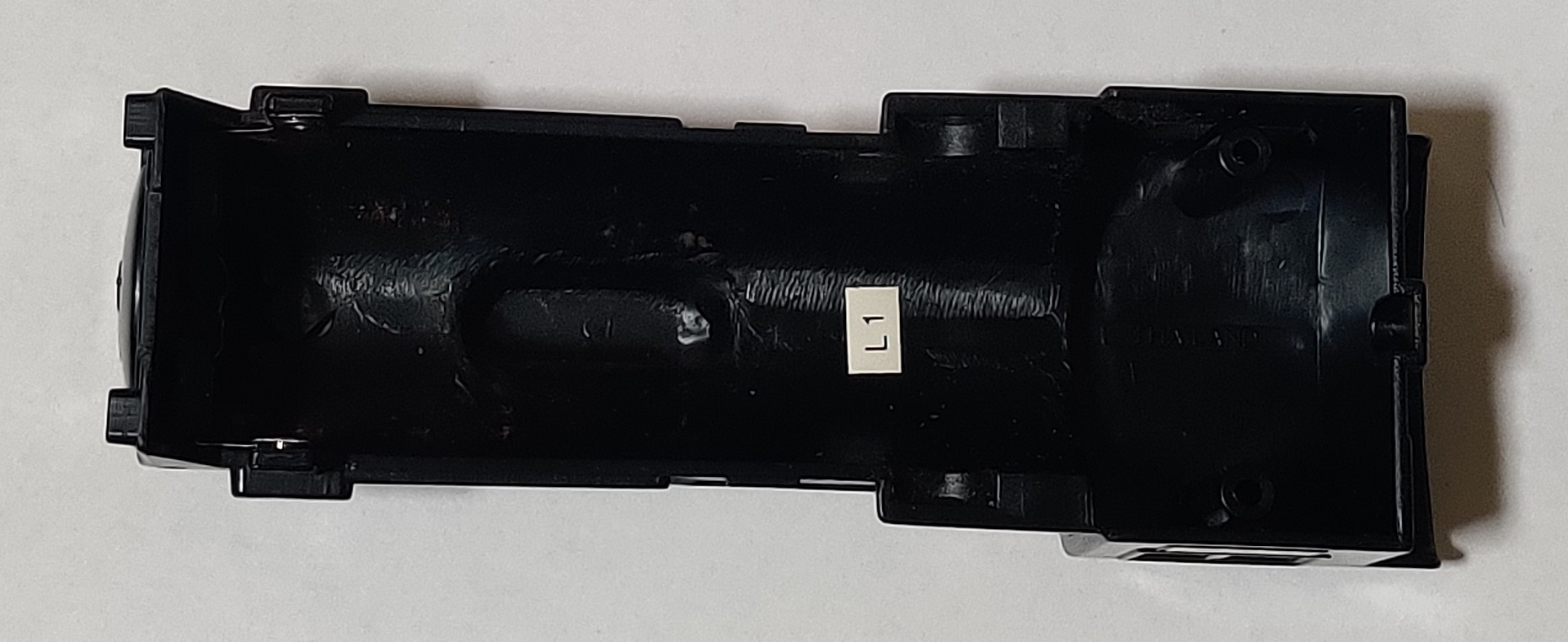
Some D-51 from this era have black stickers covering some of the exposed contacts both in the chassis and the upper shell.
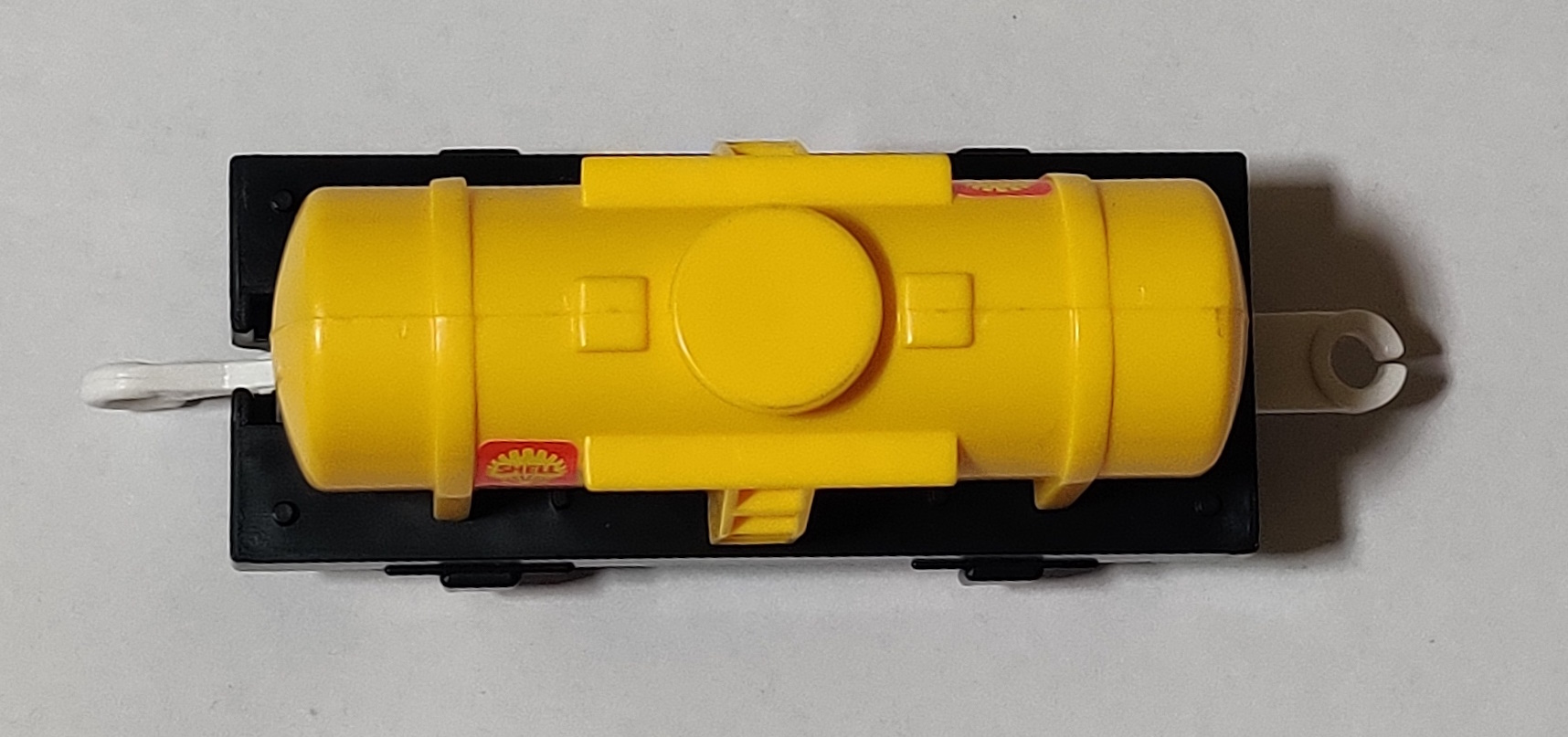
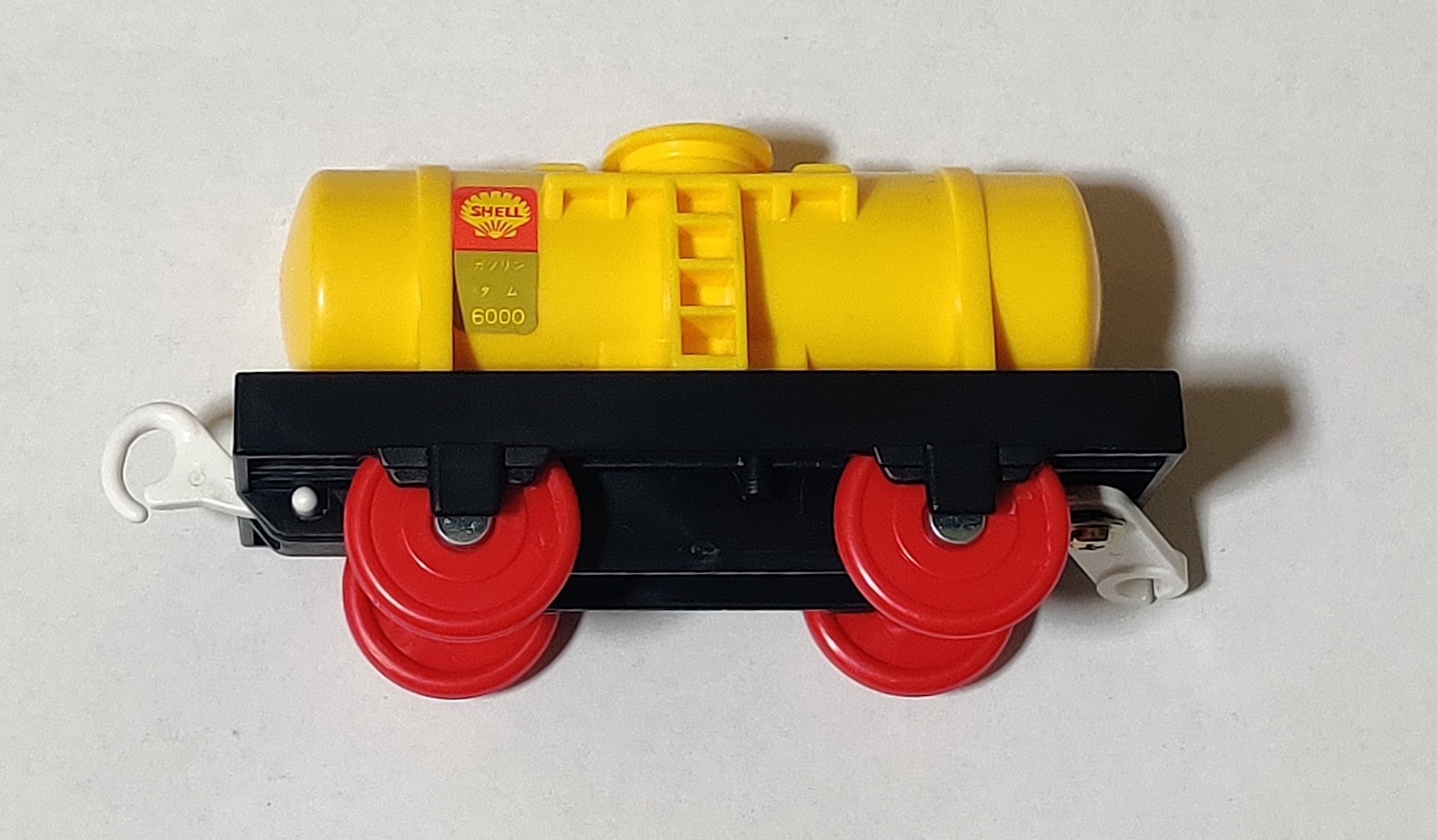
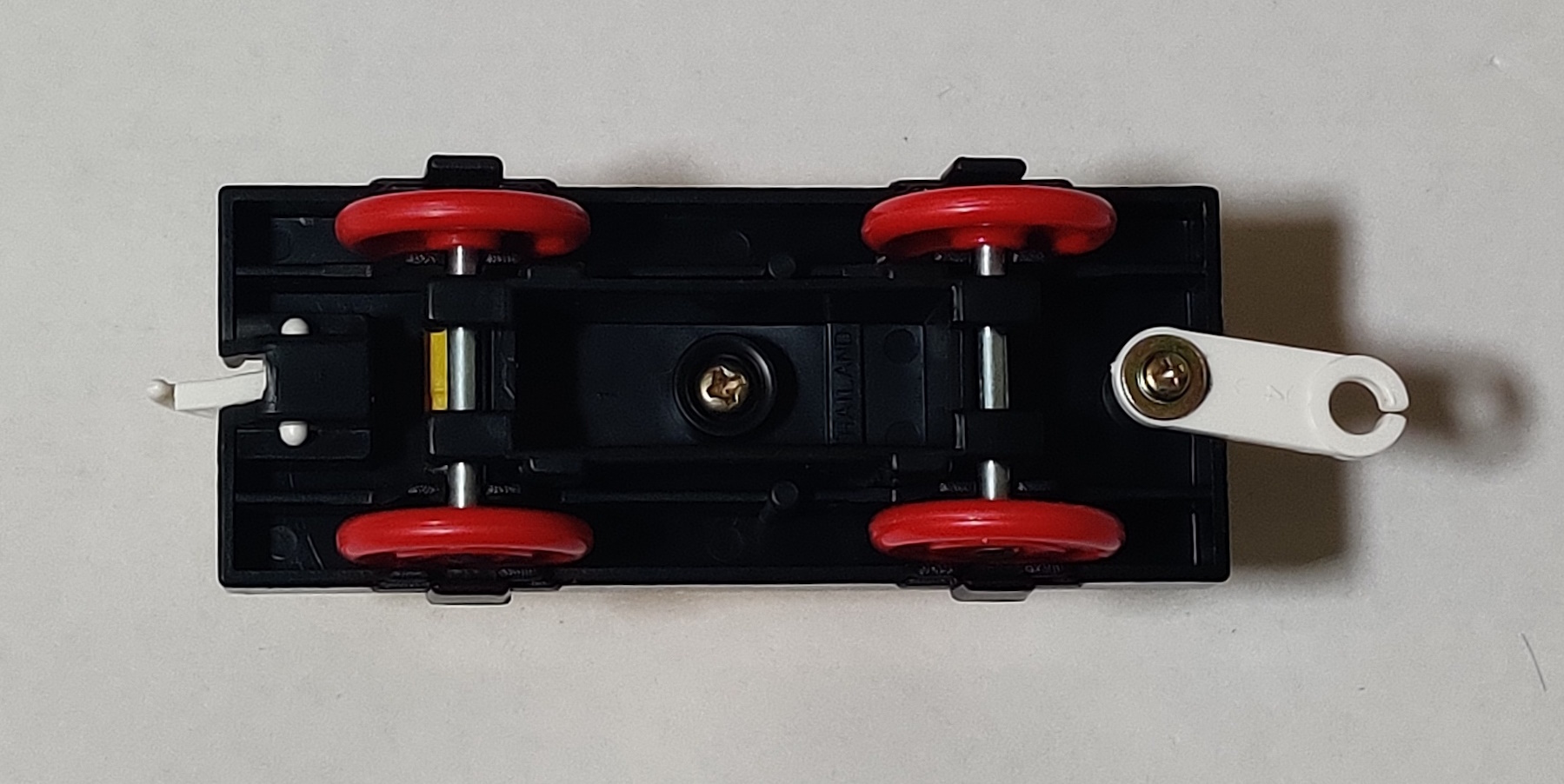
The included tanker in my 1991 D-51 with Light is a made in Thailand tanker of the older molding without the flat portion on the side of the tank to affix the Shell sticker to. The stickers are applied over the curve of the tanker and hide the screws holding the two halves of the tanker together. Like the auto carrier, the tanker car uses the older style of rear coupling with a single split. I have no idea if Tomy had a deal with Shell to use their logo.
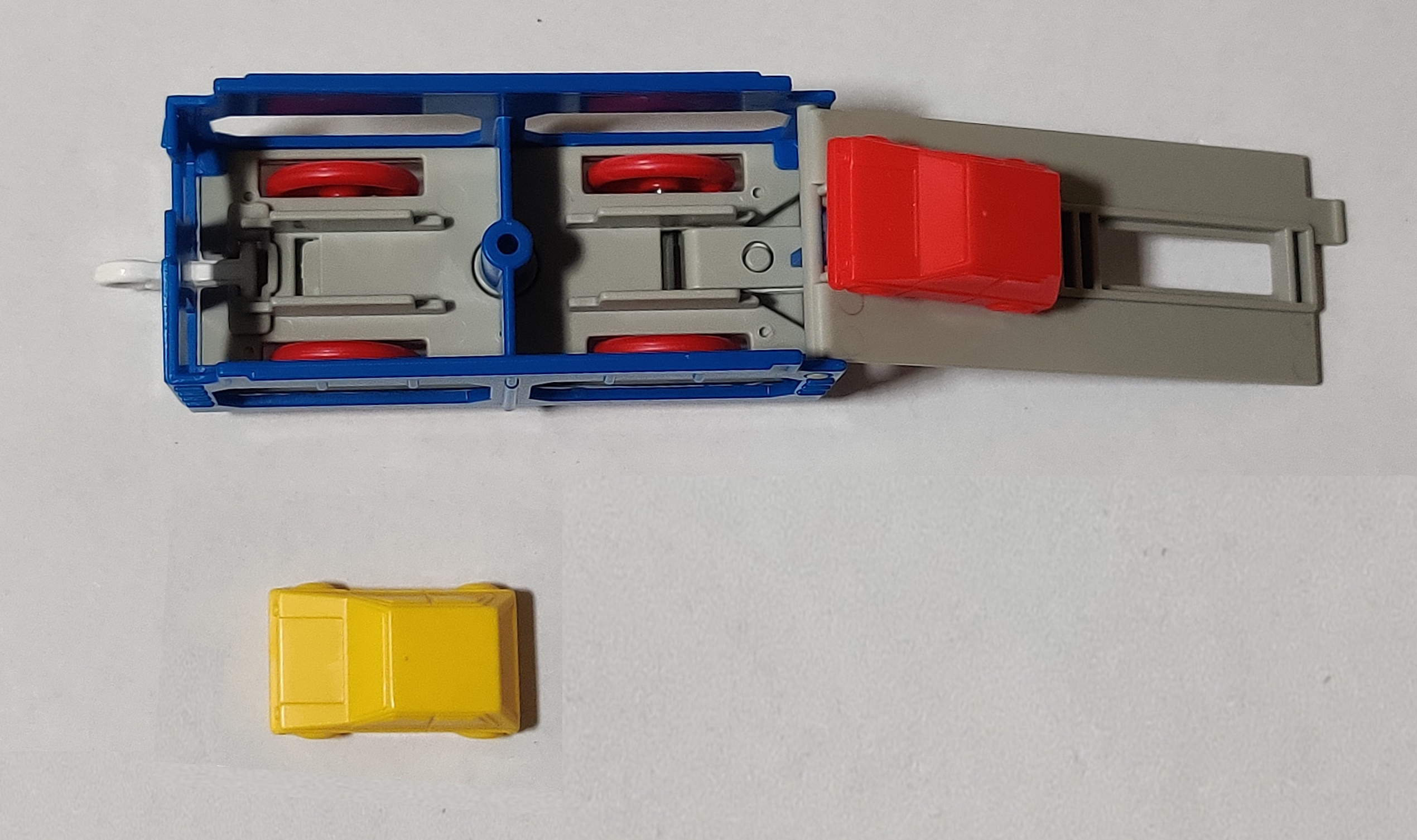
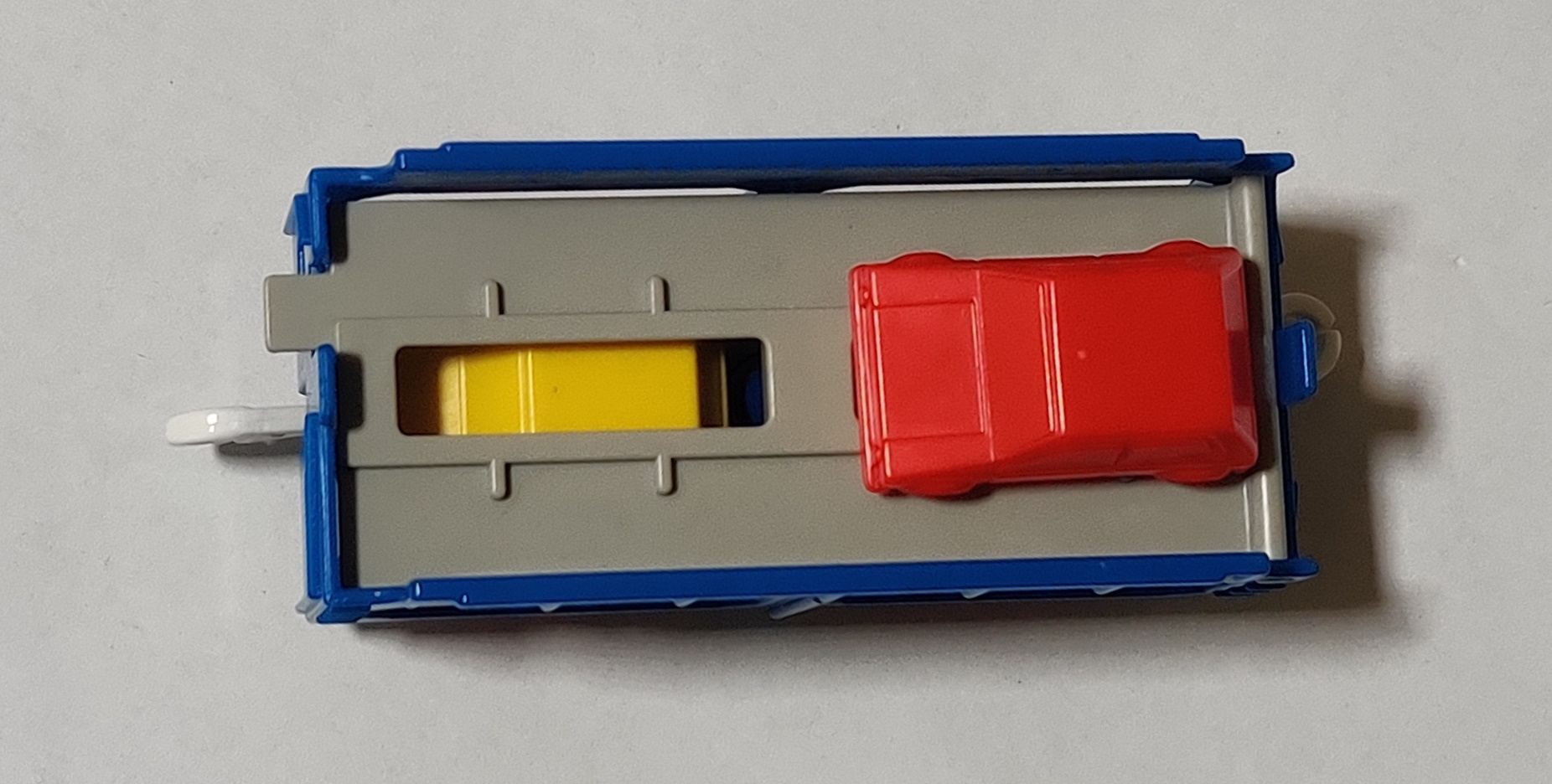
The auto carrier includes two small plastic cars with roller wheels, one yellow and one red. The top layer of the auto carrier can be flipped over and forms a ramp to load cars into the carrier. Cars can be loaded on either level of the carrier. This auto carrier was originally released individually in orange in 1980.

The D51 and tanker are both pretty classic pieces of Plarail and the auto carrier and cars are very nice and add additional play appeal to a three pack that already has a nicely featured engine. The lack of a tender does make the train look a little odd but it was fairly uncommon for a D51 to come with a tender before the push for more realistic trains in the 2000s. The incandescent bulb headlamp looks nice and is a nice color temperature and spits out a decent amount of light.
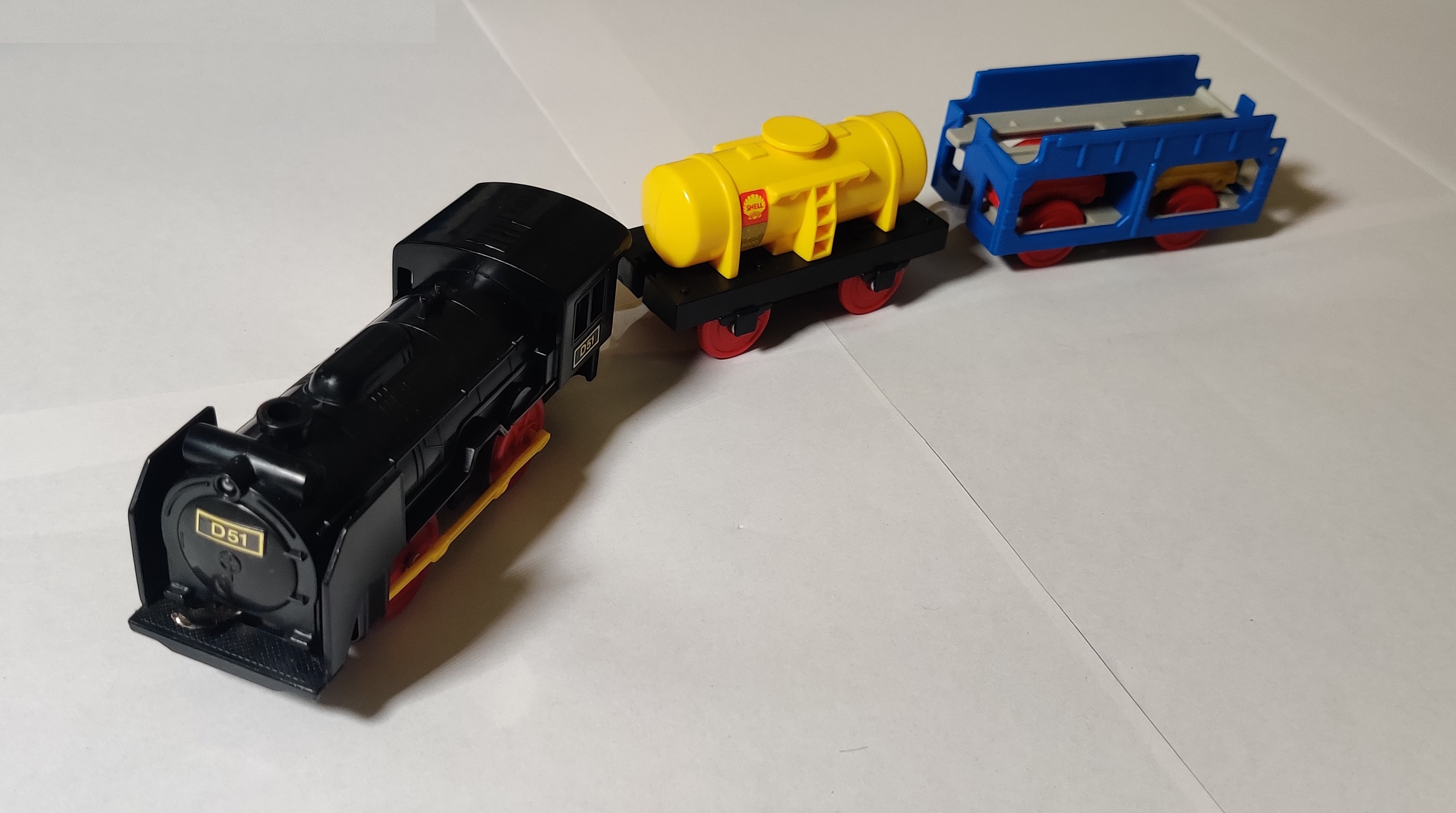
Individual releases like this did not typically include a catalog but did usually have a sheet showing how to use the coupling system and to order replacement parts.
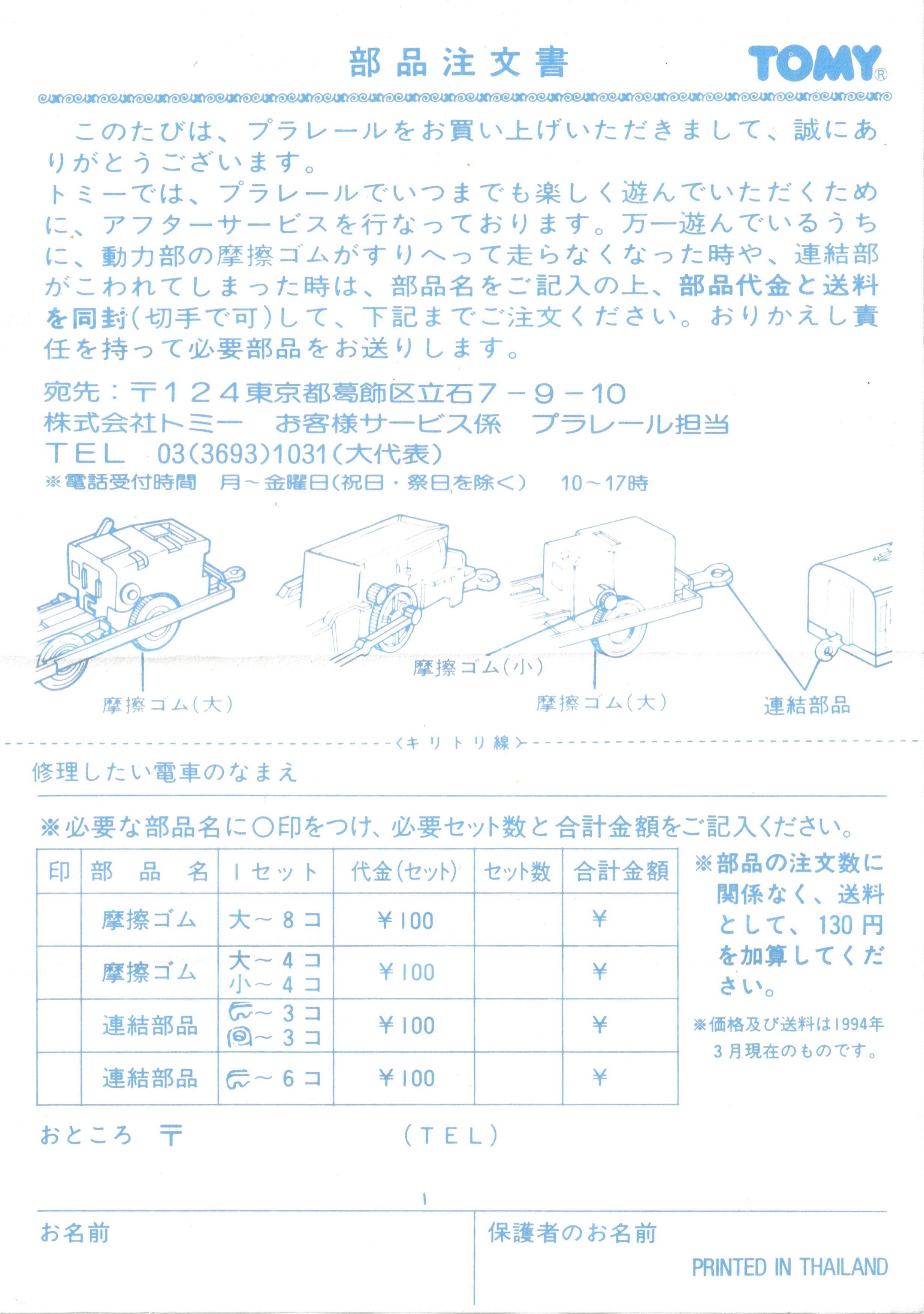
D-51 with Light (new power, seventh generation box) (1994)
After the D51 tooling was updated with a new drive system circa late 1993 the seventh generation box version of the D51 Locomotive with Light was released with the new axle-driven drive system. Like the previous release, the contents are all made in Thailand and use the old single-split style rear couplings.

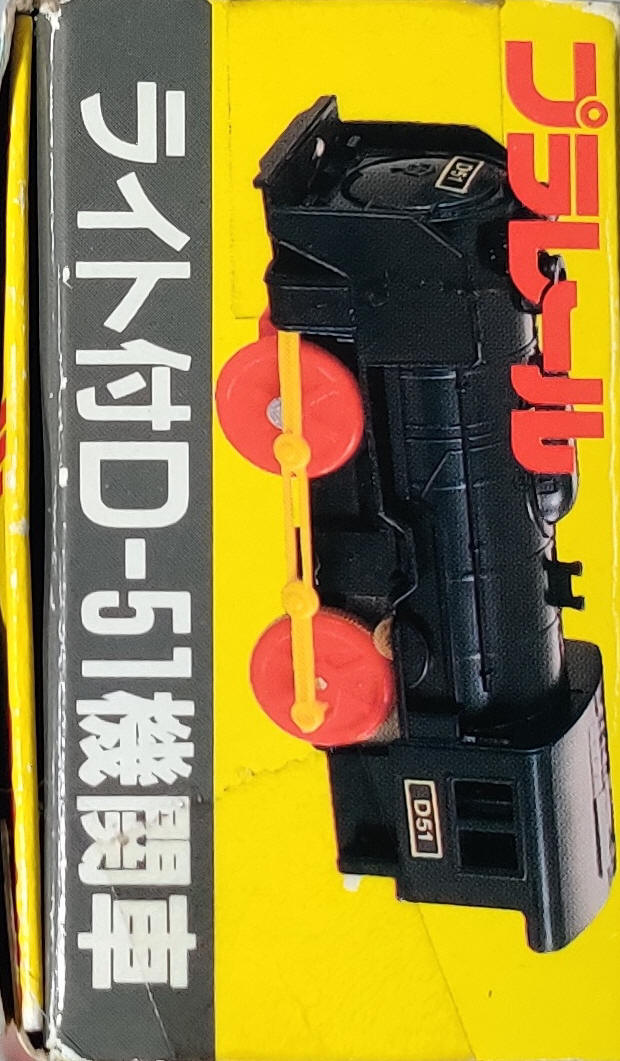

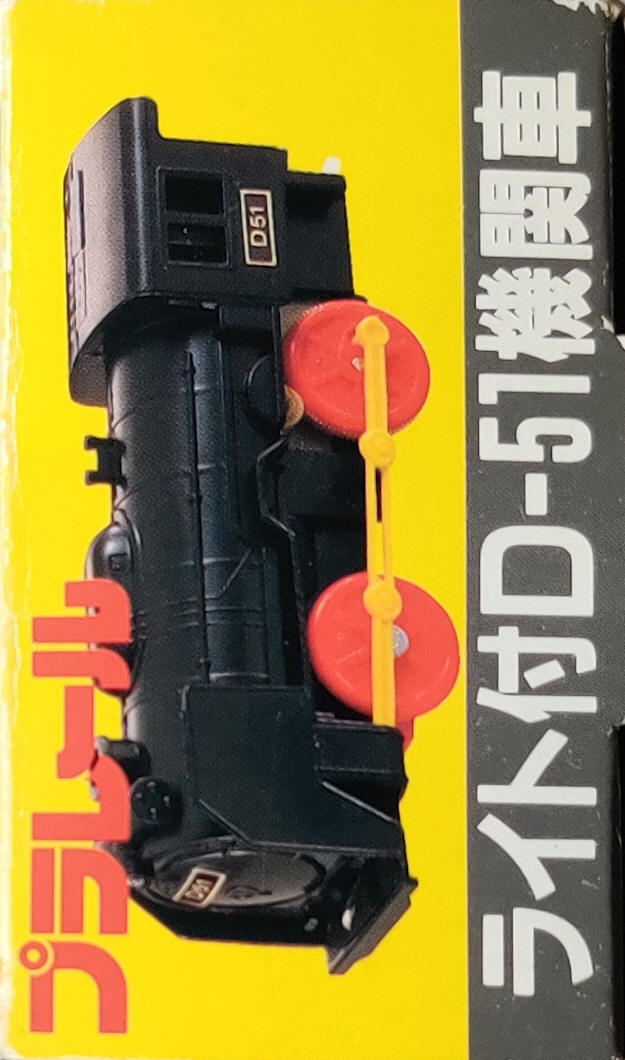


My box is part of an early (I think the first) box printing in 1994. The UPC code has been removed by a previous (presumably the original) owner for some reason. The flaps on the top and bottom of this style of box actually show the old rim-drive gearbox D51 shown above.
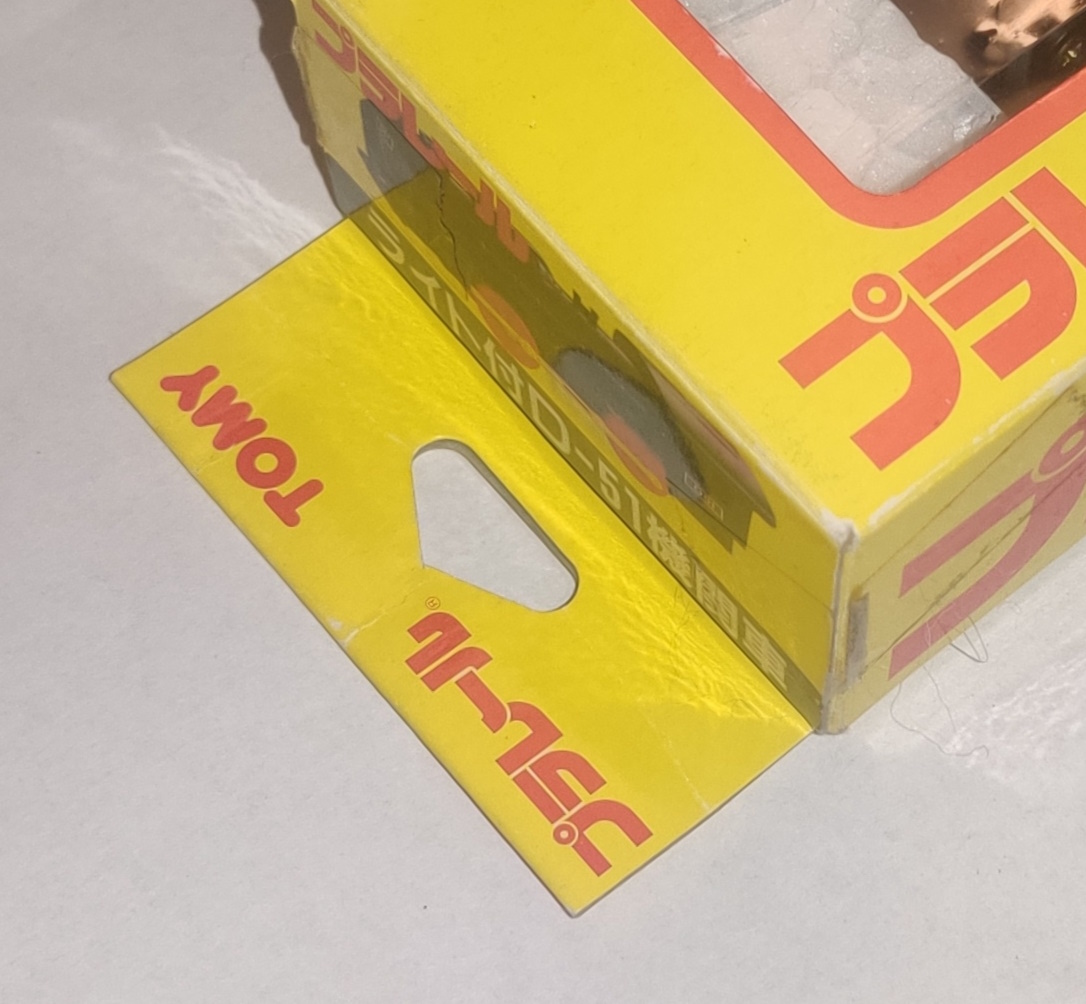
The seventh generation of box introduced the extendable box tab hanger, which sits inside the box and can be pulled out until it catches against part of the cardboard support structure to allow a retailer to hang the box from hanging pegs on a store shelf.
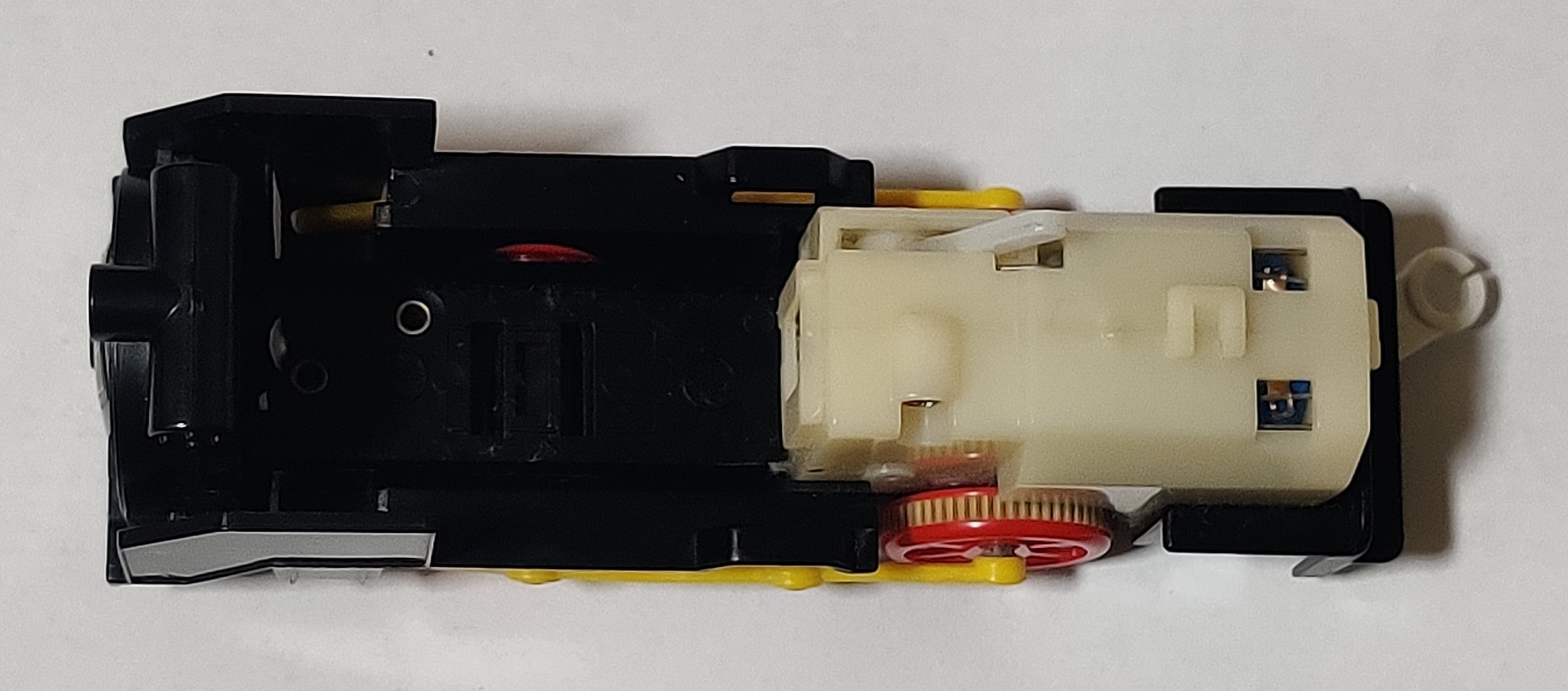
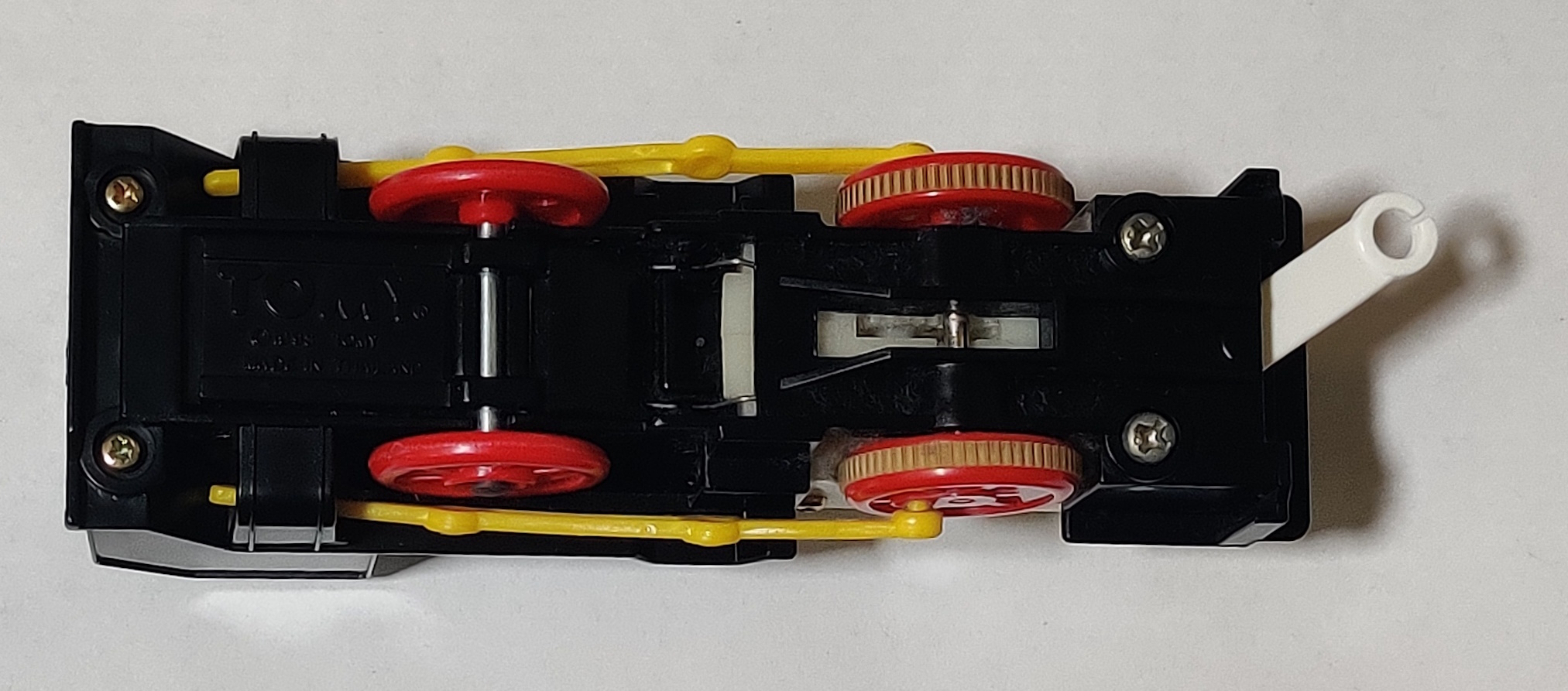
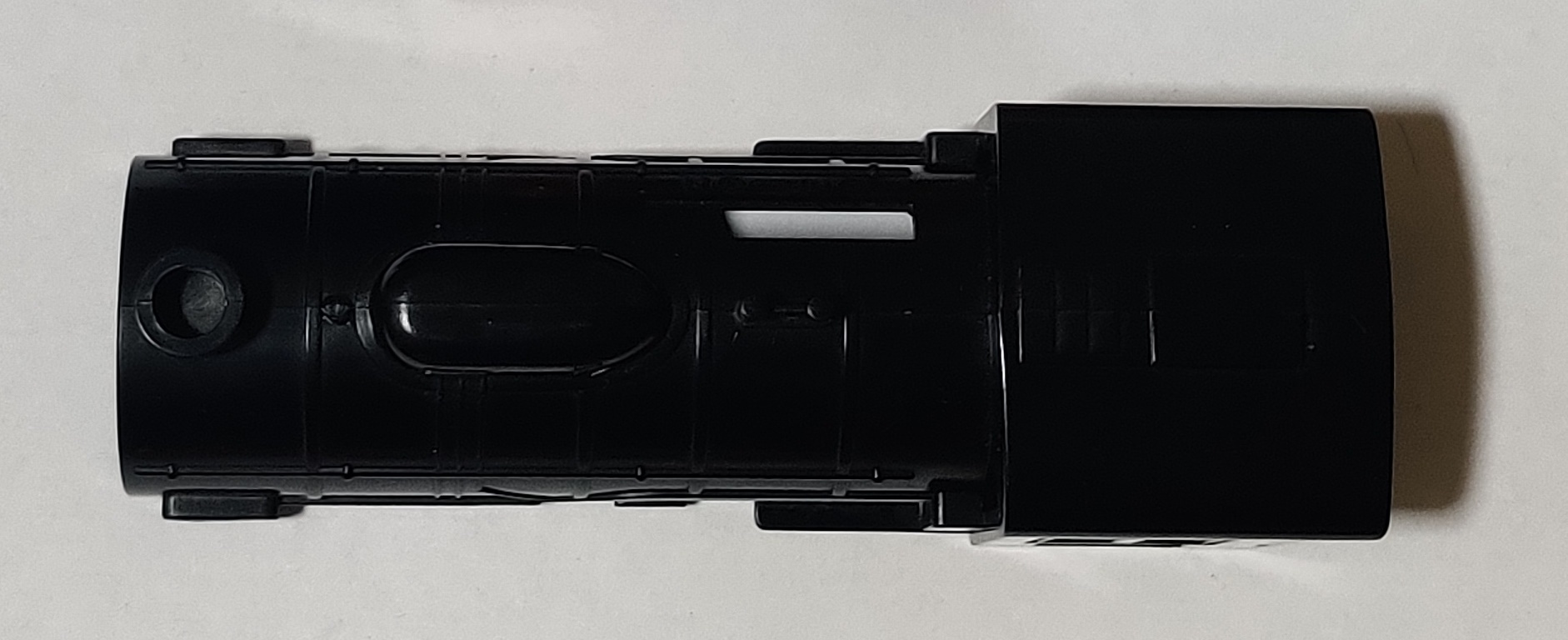
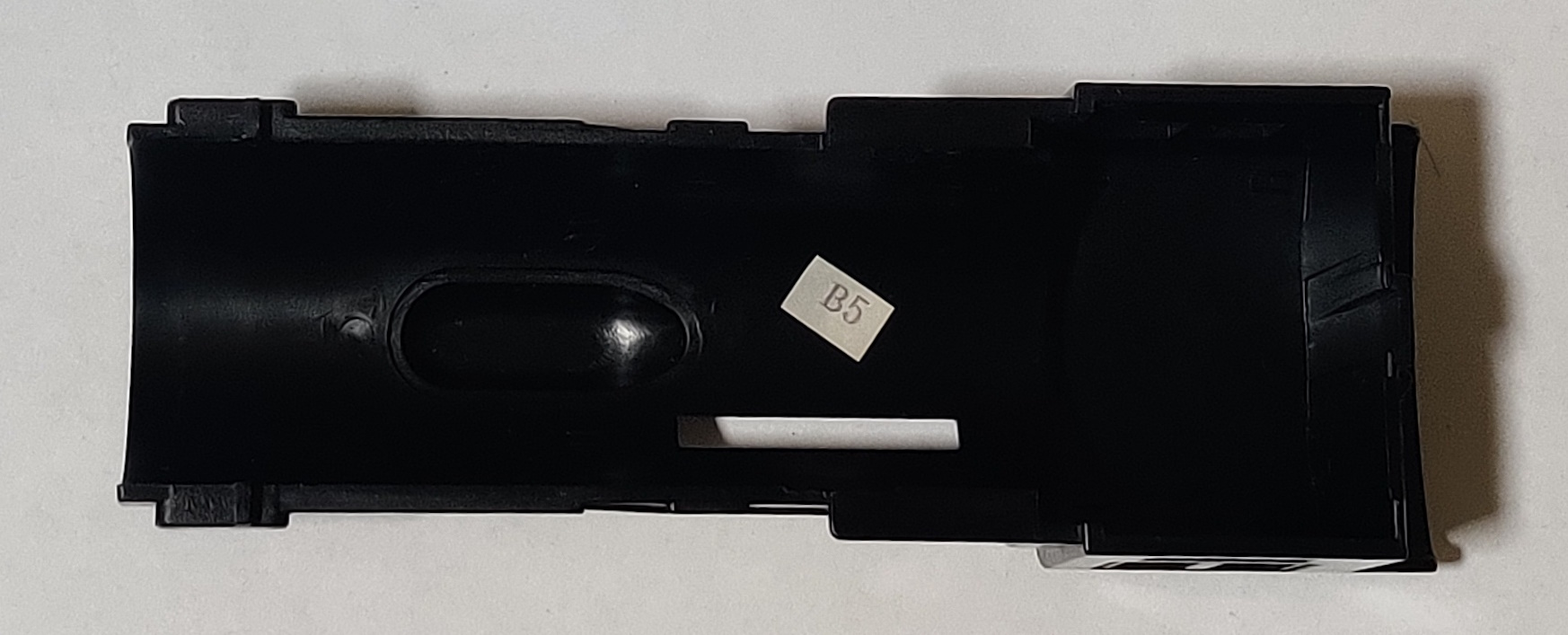
Because the power switch is no longer at the front of the locomotive, a portion of wire sticking out of the gearbox downstream from the power switch completes the circuit between the battery and light when the engine is turned on. The main power return from the negative battery contact is a similar stiff single strand of wire that runs between portions of the chassis. The smokebox and light assembly are now screwed into the chassis rather than being molded into the upper shell. My new power D51 with Light was produced in February 1995. The slightly different spacing of the slits on traction tires of the mid 90s can also be seen here on the original traction tires.
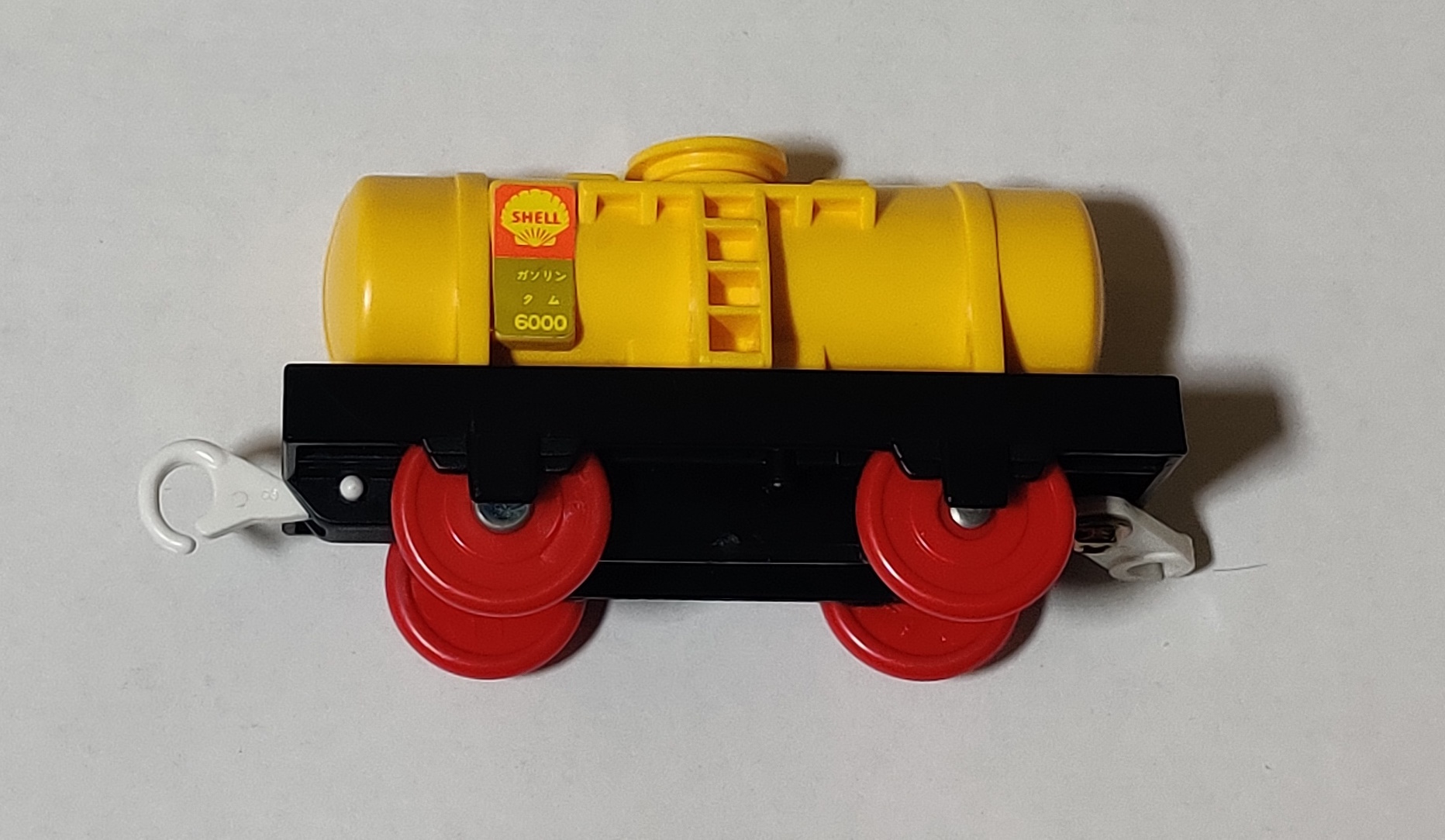
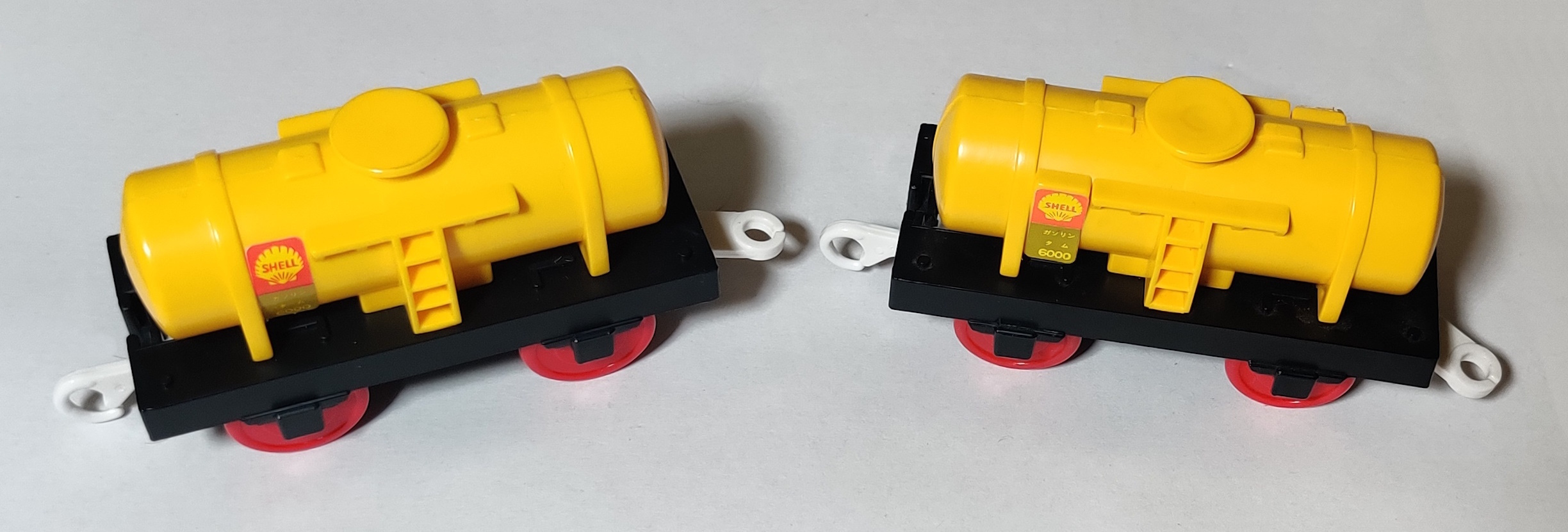
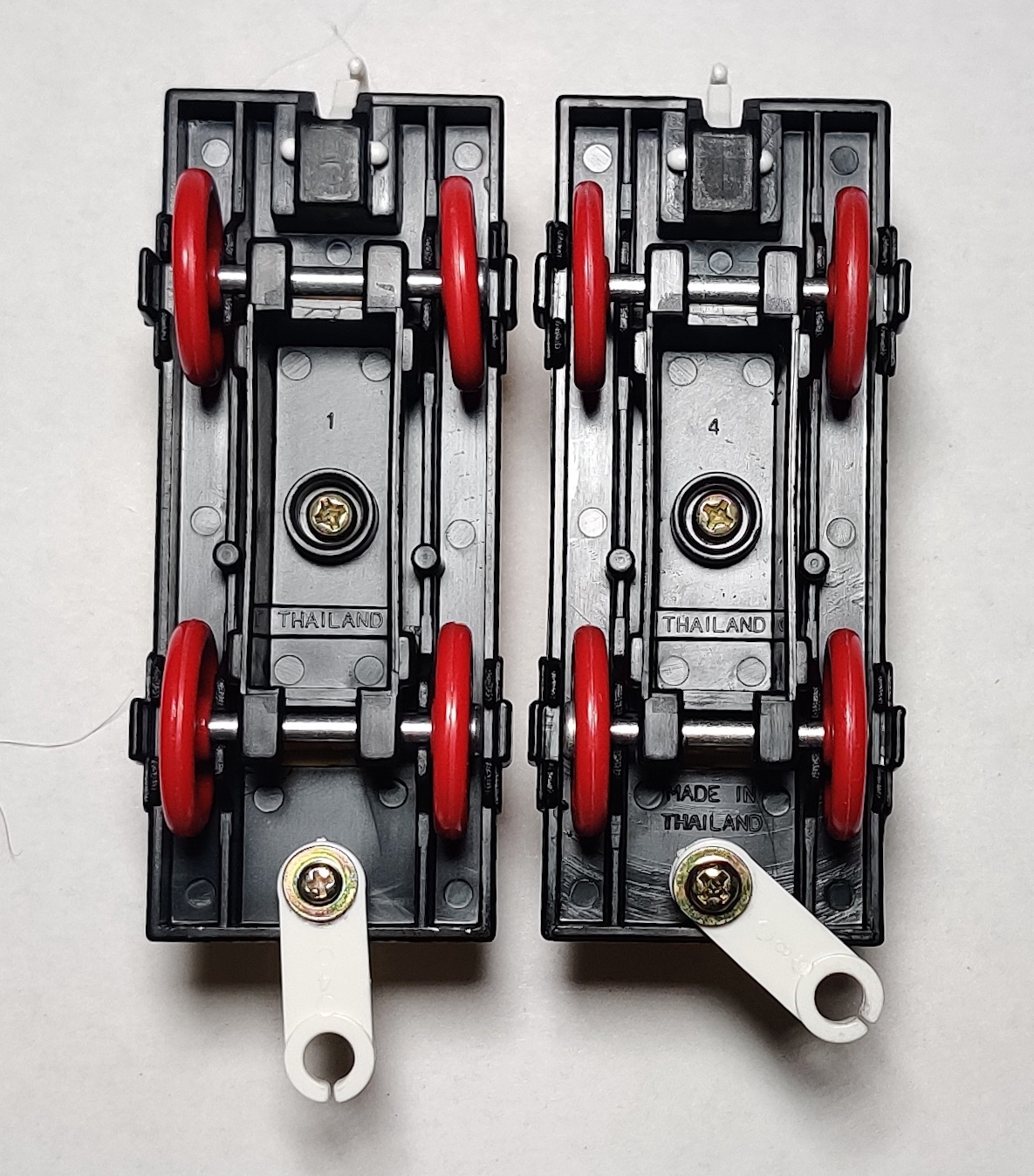
The tanker molding has been updated to have a flat area to affix the Shell sticker. This is a minor change that does not greatly effect the look of the tanker, but I suppose it looks a little nicer. My tanker has one axle that faces the wrong way, possibly from its previous owner. The newer chassis is marked as made in Thailand on the larger frame as well as the wheel supports like the earlier version. The version of this tanker sold with Percy from 1995 to 2003 is actually the older molding with completely rounded sides.
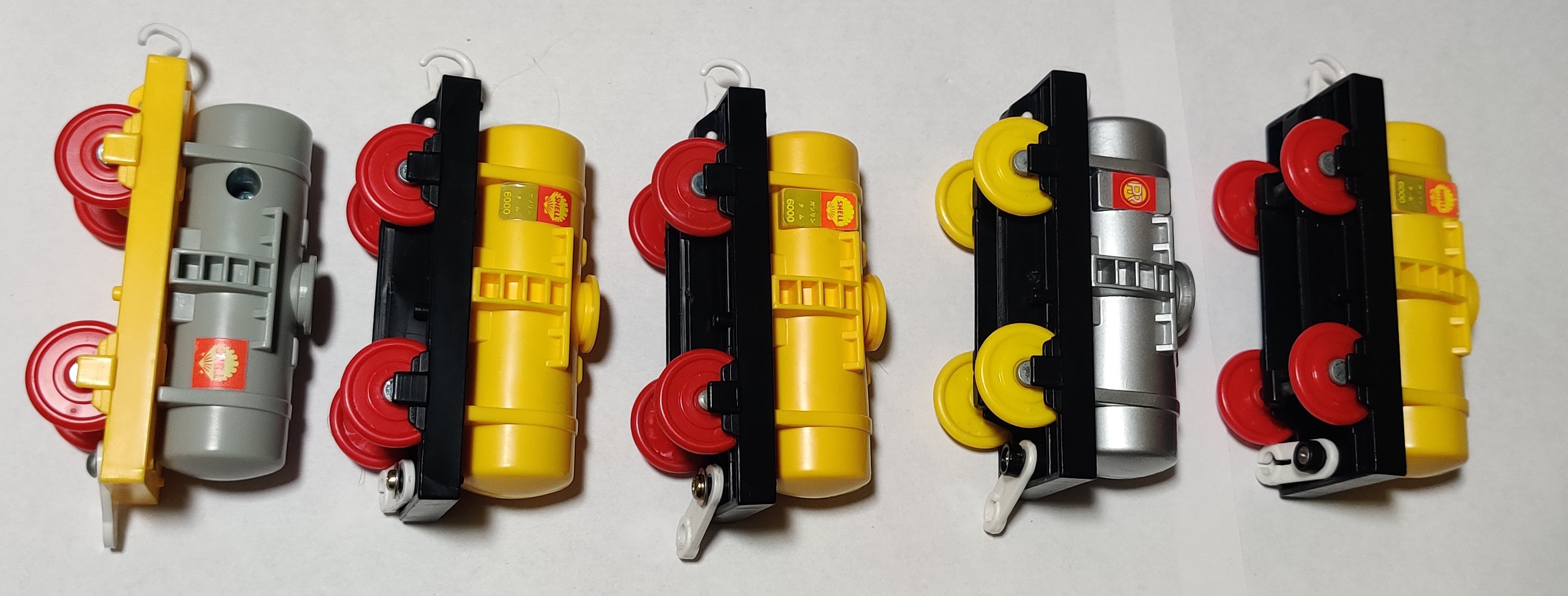
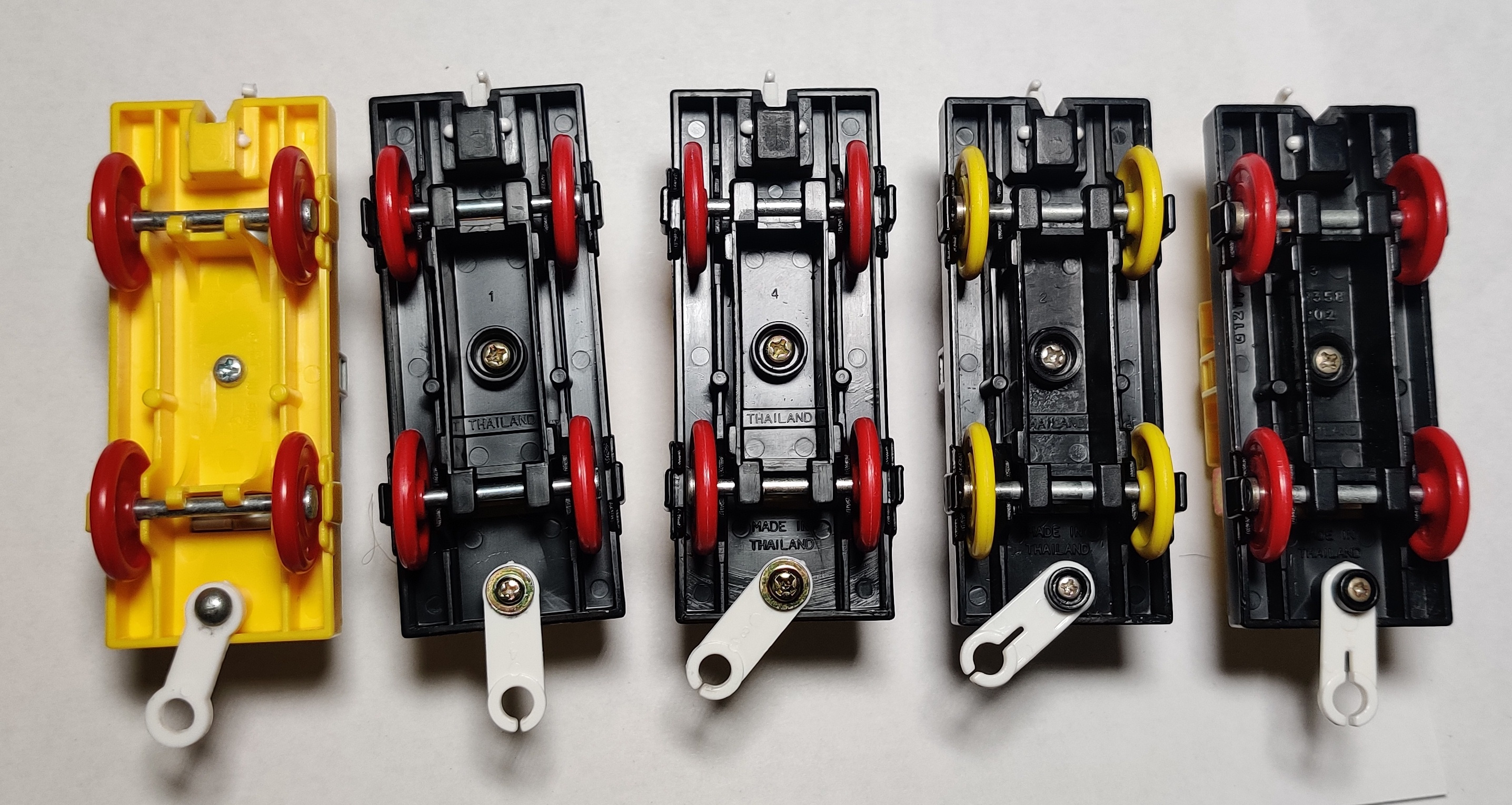
I went through some of my tankers and found a few other tooling revisions including an older made in Japan tanker with more fragile wheel supports and older couplings. Of the made in Thailand Shell tankers I looked at, the molding with the flat area for the sticker seems more common, probably because it is more recent. The Shell tanker was also produced recently enough to get the updated rear screw arrangement with the plastic washer as well as later added molding text.
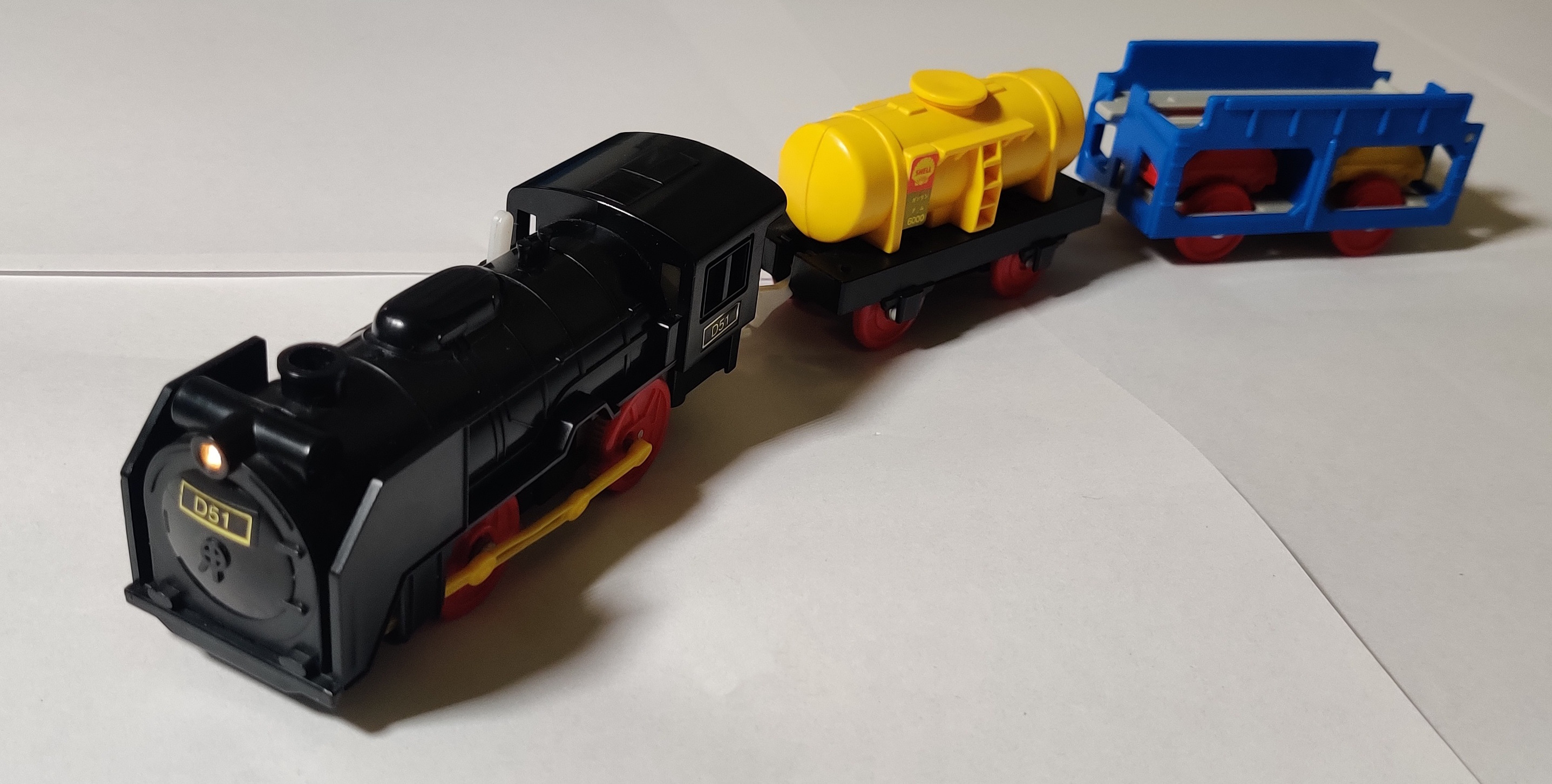
The auto carrier and cars in the new power D51 Locomotive with Light are identical to the earlier 90s release. Although I really, really like the old rim-drive gearbox engines, new power axle drive locomotives will generally always run nicer, and this version of the D51 looks very similar to the previous molding based on the original 70s design so I quite like it as well. The only major detraction is the large power switch on the top of the locomotive.

My 1994 box also included a similar replacement parts order sheet.
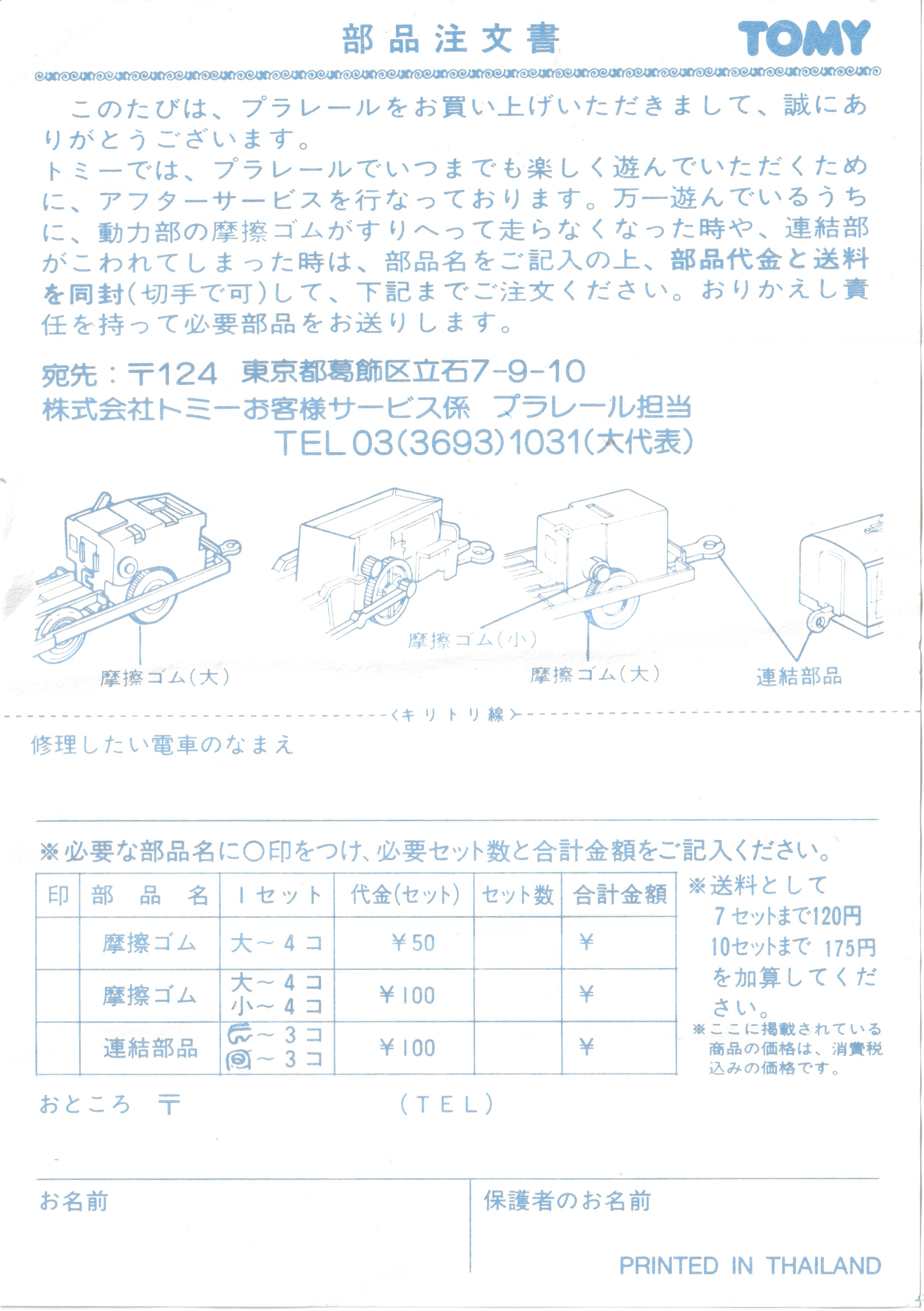
The D51 with Light was occasionally used in sets, such as the D51 Sound Station Set. The D-51 Locomotive with Light was removed from the lineup with the end of the seventh generation of boxes and the push towards more realistic Plarail engines in the early 2000s. The redesigned and more detailed D51 was also released a few times with a light function, including D51 144 in the D51 with a Light Turn Rail Set and S-28 Steam Locomotive D51 No.200 With Light.